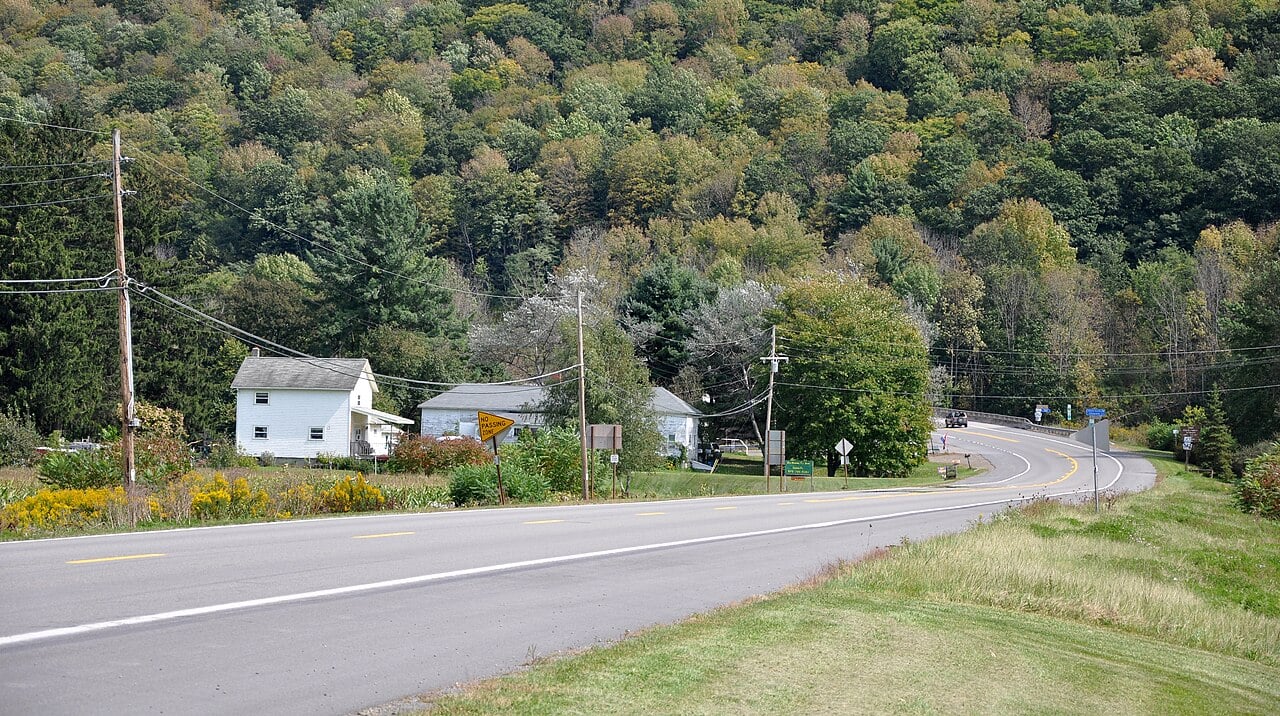
Best counties to live in Kansas
More counties in the United States experienced population growth in the last year, according to the latest Census data, even as pandemic-related moving trends begin to normalize.
Counties in the South continued to experience growth, particularly in Florida, where 96% of its 67 counties gained new residents. Polk County, Florida, a suburb of Orlando, added the most, with 26,000 people moving there in 2023.
Meanwhile, counties in the Midwest and Northeast continued to lose population, but at slower rates than the year before. Some of the biggest losses were in counties home to large cities, including Cook County, Illinois (home of Chicago) and the boroughs of Brooklyn and Queens in New York.
Many counties are experiencing growth due to their job opportunities, education, or relatively affordable housing costs. Others are favored for their historic or well-designed downtowns or access to cultural opportunities.
Stacker compiled a list of the best counties to live in Kansas using rankings from Niche. Niche ranks counties by various factors including public schools, educational attainment, cost of living, and housing.
Keep reading to see if your county made the list.
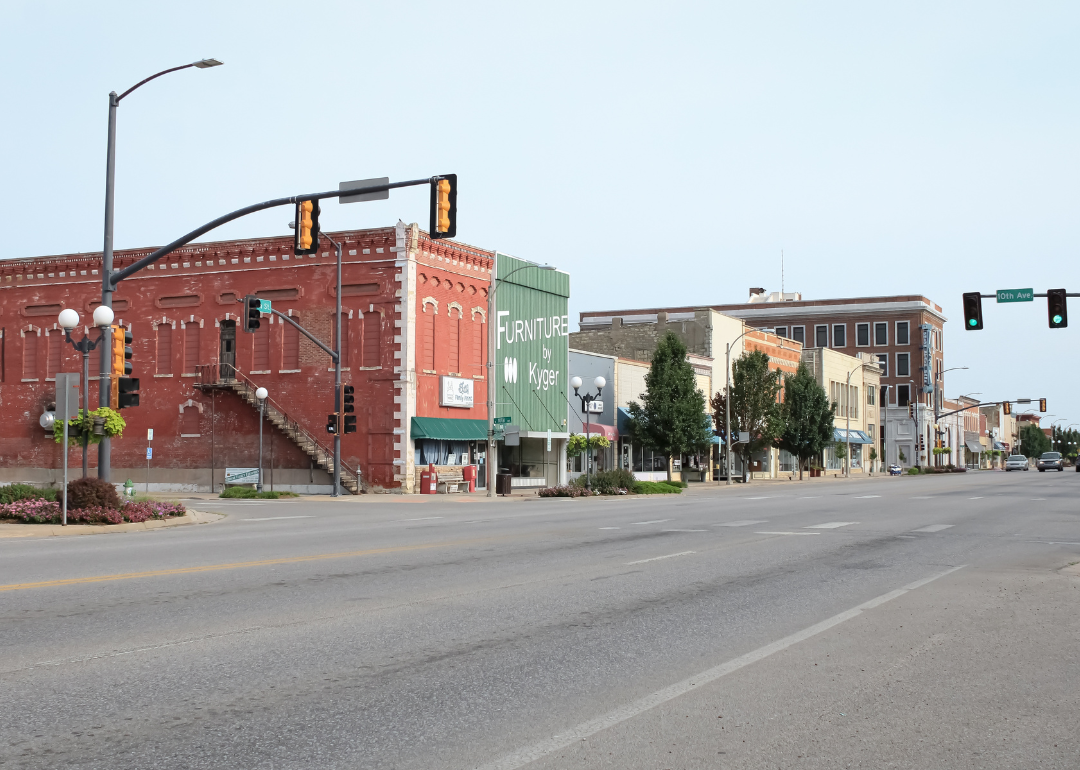
#30. Cowley County, Kansas
– Overall Rank: 1,081
– Population: 34,661
– Median household income: $55,726
– Median home value: $104,000 (71% own)
– Median rent: $776 (29% rent)
– Top public schools: Dexter Elementary School (grade B+), Dexter High School (grade B+), Udall Middle School (grade B+)
– Top private schools: Ark City Christian Academy (grade C+), Sacred Heart Catholic School (grade unavailable), Trinity Lutheran School (grade unavailable)
– Top places: Winfield (grade B+), Arkansas City (grade B), Walnut Township (grade A)
About
Cowley County, Kansas is shaped by a strong agricultural foundation, complemented by manufacturing and education as key economic drivers. Local communities are known for their close-knit atmosphere, civic pride, and support for schools, festivals, and public programs. The economy is balanced by farming, aerospace, and small business activity.
Natural beauty surrounds the area with rolling prairies, rivers, and parks offering outdoor recreation and scenic views. Historical landmarks and cultural institutions reflect the county’s deep roots and commitment to preserving local heritage. Cowley County maintains a resilient and welcoming identity through its mix of tradition, industry, and community life.
Where is Cowley County?
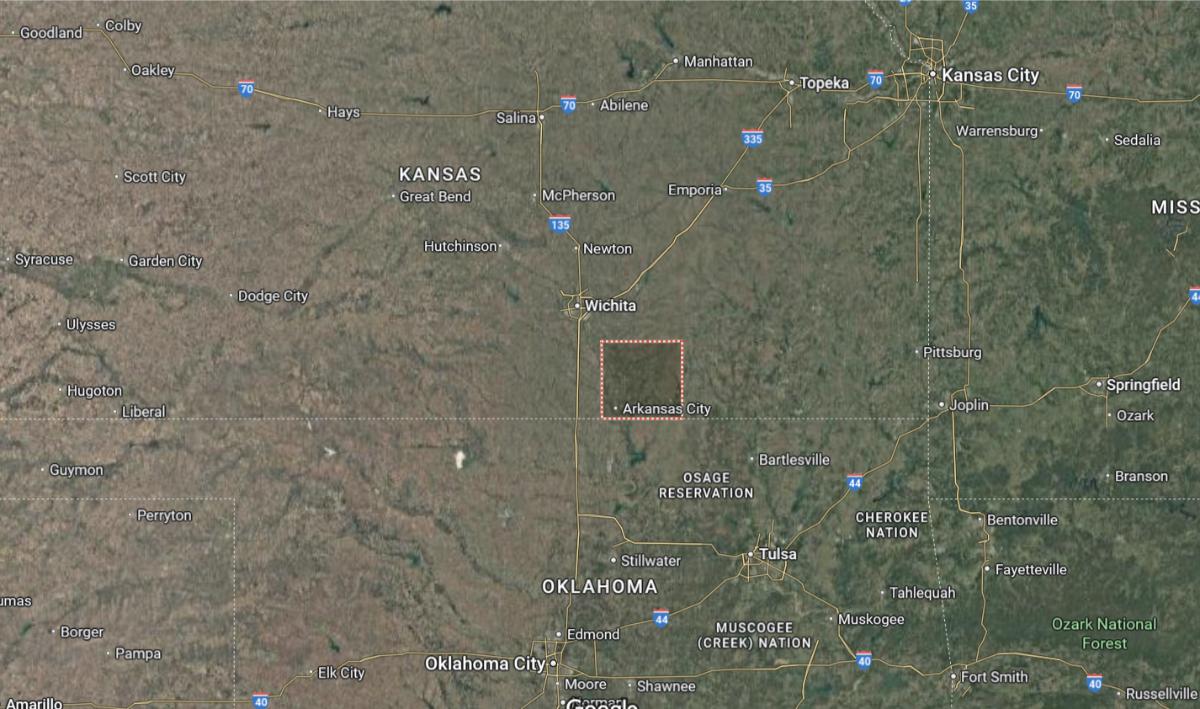
Cowley County is located in southern Kansas near the Oklahoma border. It lies about 50 miles southeast of Wichita and approximately 15 miles north of the Kansas–Oklahoma state line. The county seat, Winfield, is near US Highways 77 and 160.
The county is roughly 90 miles southwest of Topeka and about 160 miles north of Oklahoma City. It also sits around 70 miles east of Hutchinson. Cowley County’s location provides regional access to major highways and cross-state travel between Kansas and Oklahoma.
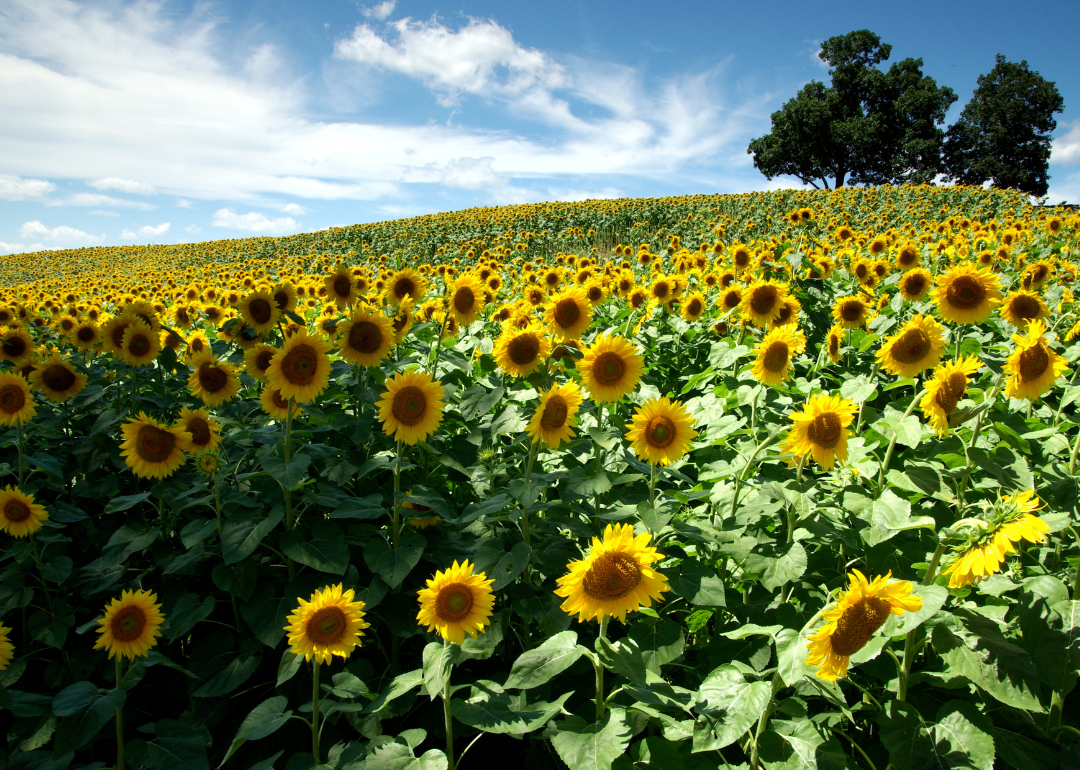
#29. Washington County, Kansas
– Overall Rank: 1,052
– Population: 5,529
– Median household income: $59,432
– Median home value: $106,100 (77% own)
– Median rent: $540 (23% rent)
– Top public schools: Hanover Elementary School (grade B+), Linn Elementary School (grade B+), Washington County High School (grade B)
– Top private schools: St. John’s Catholic School (grade unavailable), Linn Lutheran School (grade unavailable)
– Top places: Haddam Township (grade A), Linn Township (grade A minus), Sherman Township (grade A minus)
About
Washington County, Kansas is a rural region rooted in agriculture, with farming and livestock playing a central role in the local economy. Small towns across the county foster strong community ties through local events, school activities, and shared traditions. The area values independence, hard work, and generational connections to the land.
Rolling fields, open skies, and quiet roads define the landscape, offering a peaceful environment for residents and visitors. Historic buildings and local museums preserve the area’s pioneer heritage and cultural identity. With its steady pace of life and deep rural character, Washington County reflects the spirit of small-town Kansas living.
Where is Washington County?
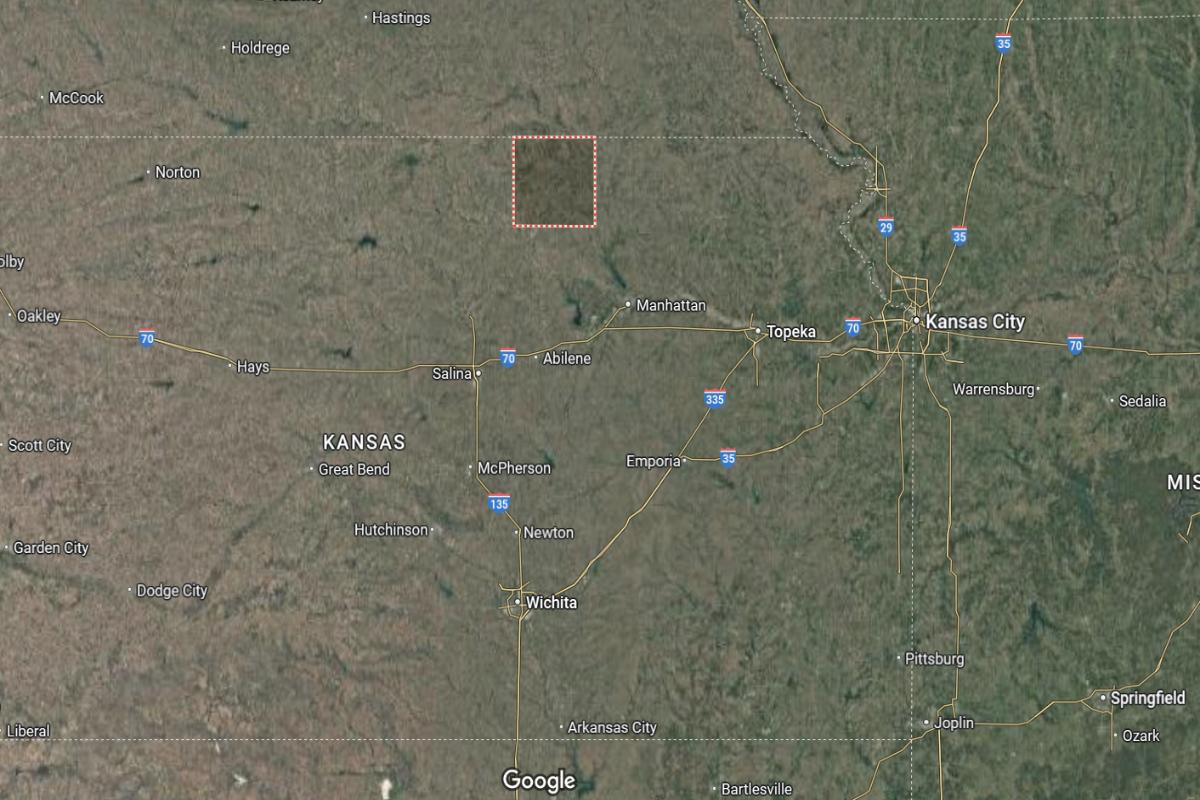
Washington County is located in north-central Kansas, near the Nebraska border. It lies about 65 miles north of Manhattan and approximately 150 miles northwest of Topeka. The county seat, Washington, is near US Highway 36 and State Highway 15.
The county is about 100 miles west of St. Joseph, Missouri. It also sits around 130 miles north of Wichita. Washington County’s location places it in a rural region with access to nearby states and central Kansas routes.
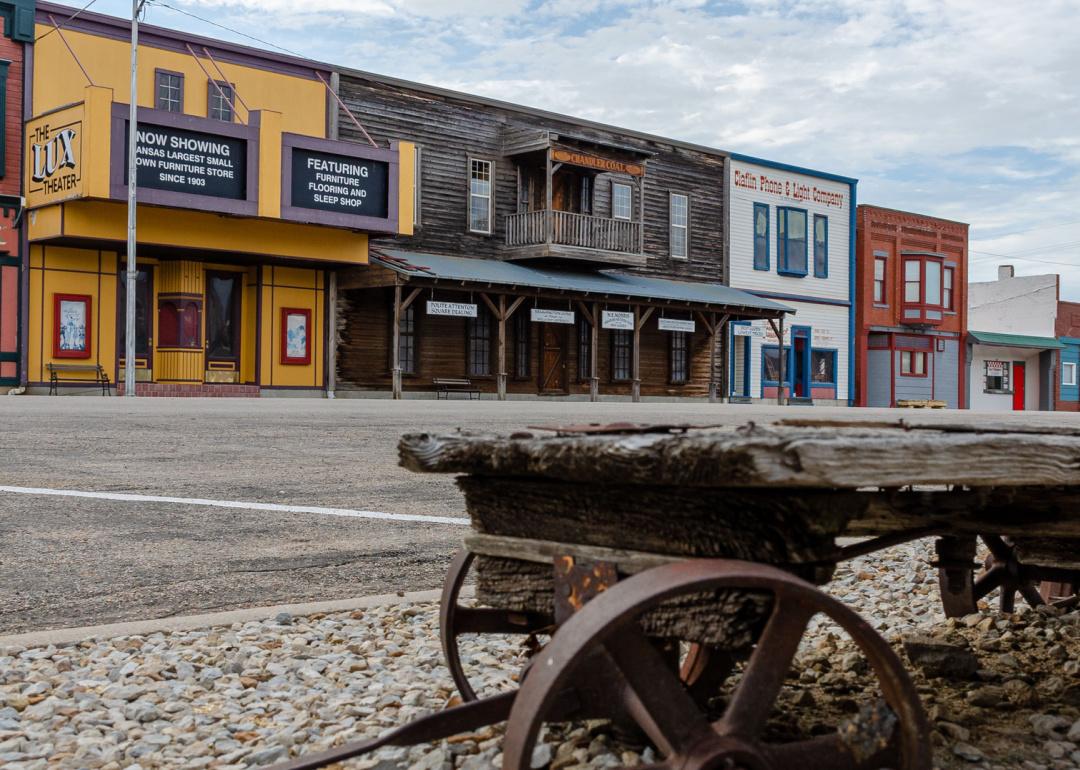
#28. Barton County, Kansas
– Overall Rank: 1,039
– Population: 25,477
– Median household income: $54,634
– Median home value: $113,200 (67% own)
– Median rent: $738 (33% rent)
– Top public schools: Central Plains High School – Claflin (grade B+), Lincoln Elementary School (grade B+), Hoisington High School (grade B)
– Top private schools: Holy Family School (grade unavailable), St. Joseph Elementary School (grade unavailable), Central Kansas Christian Academy (grade unavailable)
– Top places: Hoisington (grade B), Great Bend (grade B), Cheyenne Township (grade A)
About
Barton County, Kansas has a strong agricultural base, supported by energy production, healthcare, and education as vital parts of its economy. The community places high value on local schools, civic involvement, and preserving small-town character. Residents enjoy a close-knit environment where traditions and public events bring people together.
Natural areas, wetlands, and parks provide opportunities for wildlife observation, hunting, and outdoor recreation. Historical sites and cultural programs highlight the region’s pioneer legacy and rural heritage. Barton County balances economic resilience with a deep connection to land, history, and community life.
Where is Barton County?
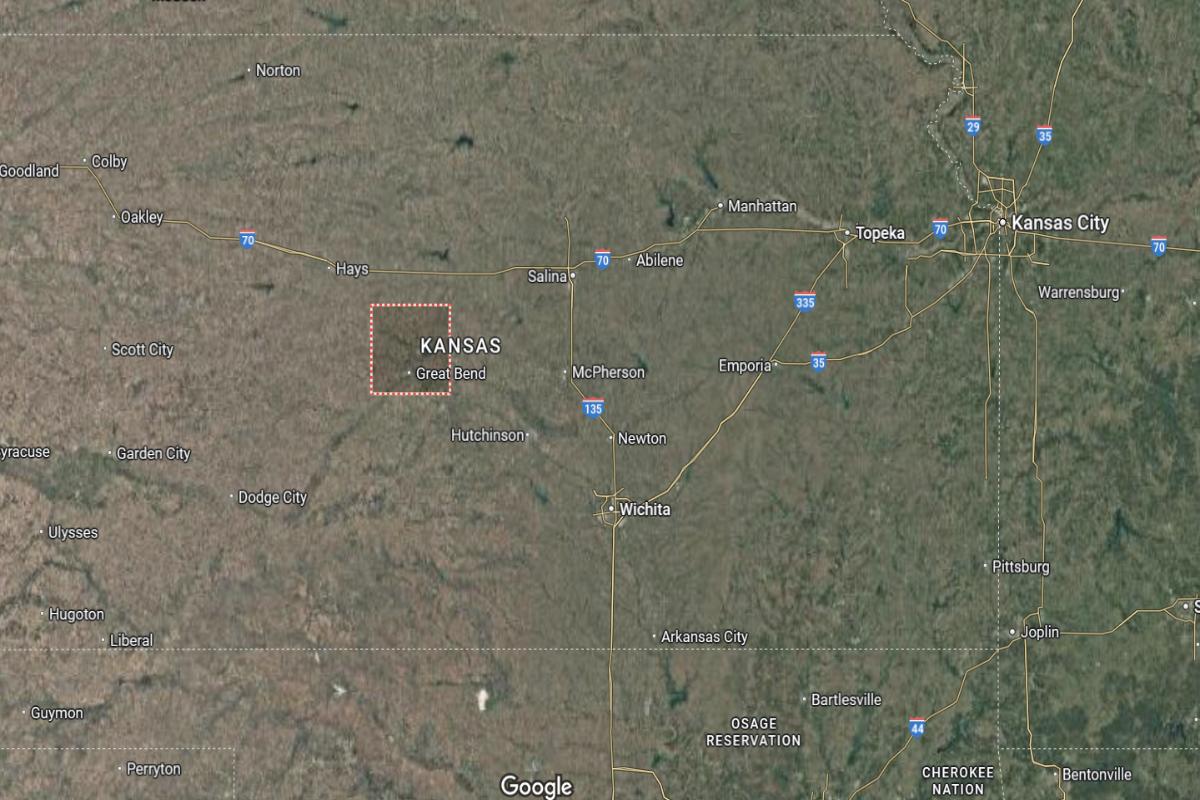
Barton County is located in central Kansas, in a region of plains and agriculture. It lies about 60 miles west of Hutchinson and approximately 110 miles northwest of Wichita. The county seat, Great Bend, is near US Highways 281 and 56.
The county is roughly 100 miles northeast of Dodge City and about 210 miles west of Topeka. It also sits around 170 miles south of the Nebraska border. Barton County’s location offers regional connectivity across central and western Kansas.
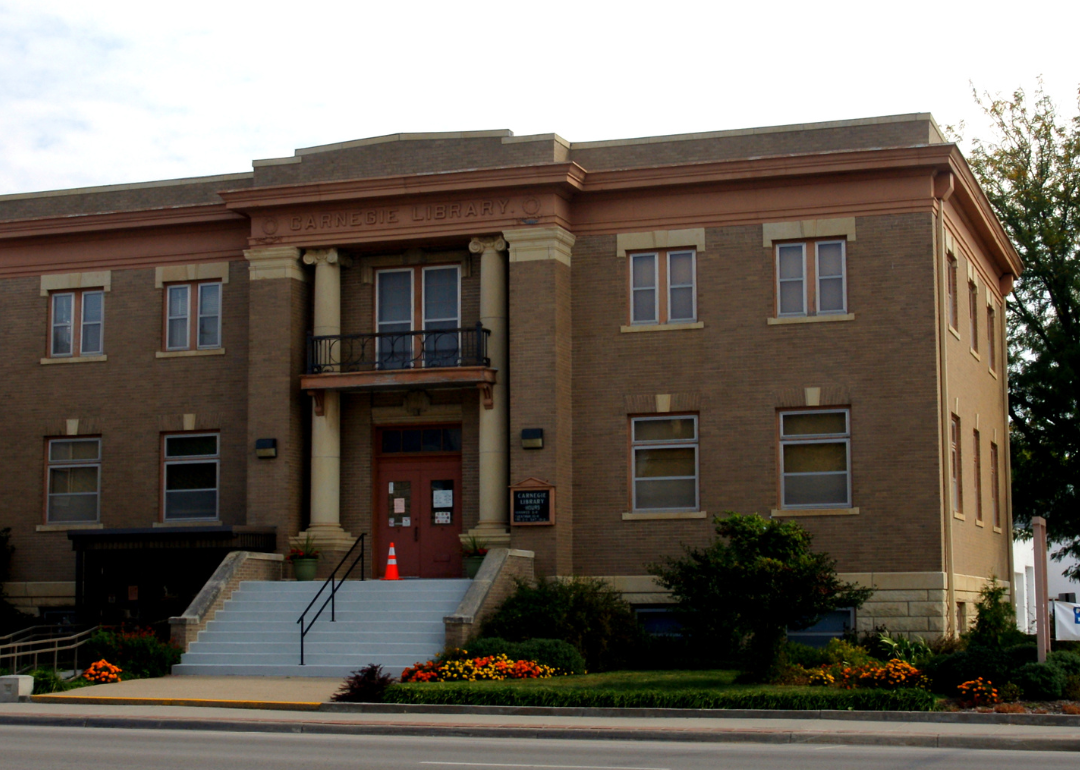
#27. Clay County, Kansas
– Overall Rank: 1,019
– Population: 8,088
– Median household income: $57,765
– Median home value: $136,600 (71% own)
– Median rent: $750 (29% rent)
– Top public schools: Wakefield High School (grade A minus), Clay Center Community High School (grade B+), Lincoln Elementary School (grade B+)
– Top private schools:
– Top places: Clay Center (grade B), Blaine Township (grade A+), Clay Center Township (grade A)
About
Clay County, Kansas is centered around agriculture, small business, and local services that support a stable rural economy. Community pride is evident through school spirit, public festivals, and involvement in civic activities. The area fosters strong neighborly connections and a focus on preserving local traditions.
Scenic farmland, quiet roads, and open skies define the county’s peaceful landscape. Historical buildings, museums, and public spaces reflect the region’s heritage and pioneer roots. With its blend of rural charm and steady community values, Clay County offers a grounded and welcoming way of life.
Where is Clay County?
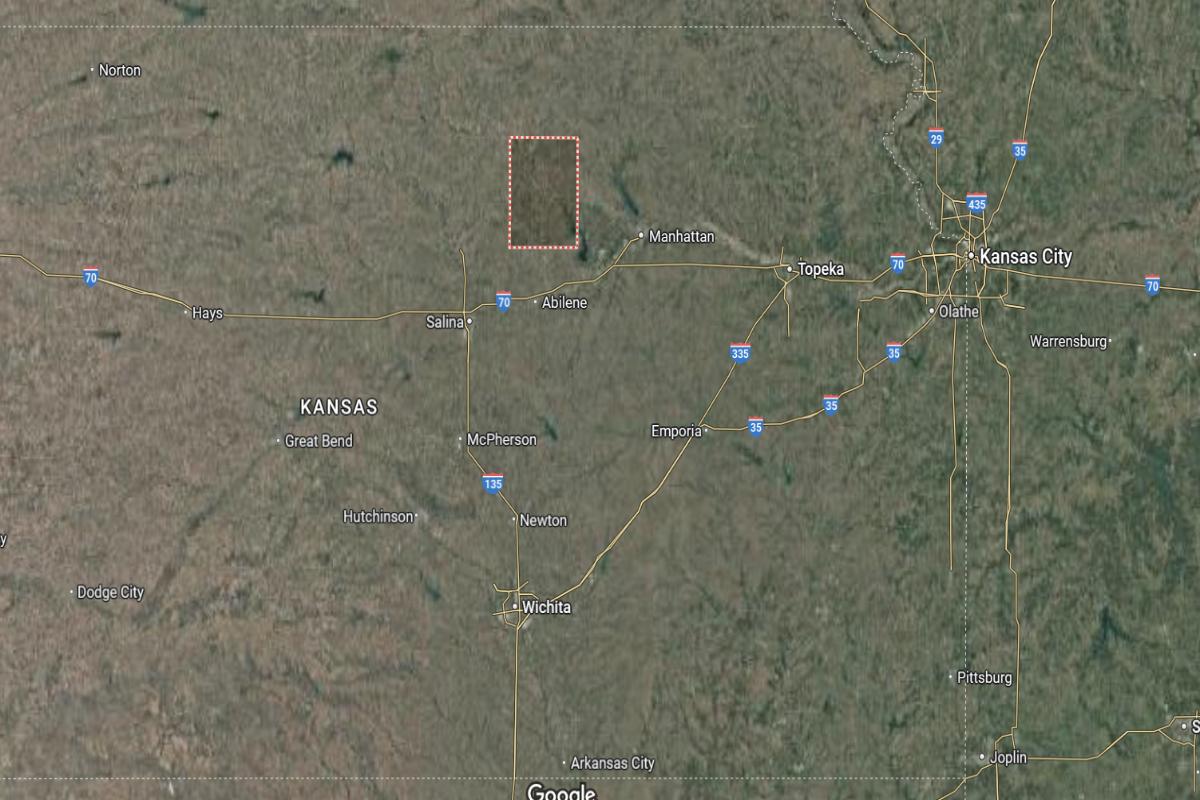
Clay County, Kansas, is located in the north-central region of the state, approximately 130 miles west of Kansas City and about 40 miles northwest of Manhattan, Kansas. It sits just west of the Flint Hills, providing a mix of prairie and rolling terrain. The county seat, Clay Center, lies roughly 100 miles north of Wichita.
The county is also about 200 miles southeast of Nebraska’s state capital, Lincoln, placing it near the Kansas-Nebraska border. U.S. Highway 24 and Kansas Highway 15 intersect within the area, offering good regional connectivity. Its central location makes it a rural hub within a few hours’ drive of several key cities in the Great Plains.
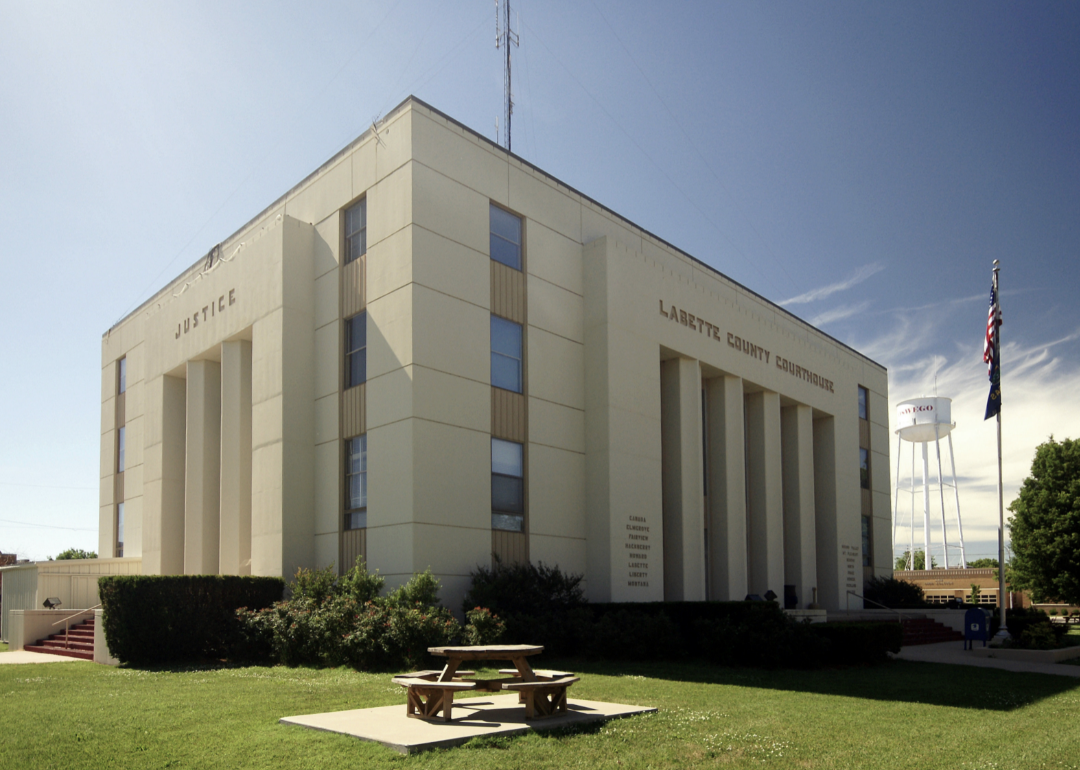
#26. Labette County, Kansas
– Overall Rank: 965
– Population: 20,096
– Median household income: $56,143
– Median home value: $94,600 (75% own)
– Median rent: $723 (25% rent)
– Top public schools: Oswego Junior/Senior High School (grade A minus), Edna Elementary School (grade A minus), Meadowview Elementary School (grade B+)
– Top private schools: St. Patrick Catholic School (grade unavailable)
– Top places: Parsons (grade B), Richland Township (grade B), Fairview Township (grade B)
About
Labette County, Kansas supports a diverse economy rooted in manufacturing, agriculture, and education. Its communities are known for strong civic engagement, local pride, and investment in schools and public programs. Small towns across the county reflect a mix of historic charm and steady development.
Recreational areas, rivers, and parks offer outdoor opportunities for fishing, hiking, and family activities. Cultural institutions and historic landmarks celebrate the region’s heritage and contributions to state history. With a focus on resilience, tradition, and growth, Labette County maintains a balanced and community-centered identity.
Where is Labette County?

Labette County, Kansas, is located in the southeastern corner of the state, roughly 160 miles south of Kansas City and about 140 miles east of Wichita. The county seat, Oswego, is positioned near the Neosho River and lies approximately 20 miles from the Oklahoma border. U.S. Highway 59 and U.S. Highway 160 run through the county, providing direct routes to nearby towns and cities.
It is about 35 miles northwest of Joplin, Missouri, making it relatively close to the Missouri border as well. Labette County is around 100 miles north of Tulsa, Oklahoma, placing it within a strategic distance of several regional metropolitan areas. Its location supports both agricultural and industrial connections within the Four-State Area.

#25. Morris County, Kansas
– Overall Rank: 961
– Population: 5,385
– Median household income: $52,866
– Median home value: $111,700 (82% own)
– Median rent: $706 (18% rent)
– Top public schools: Council Grove Elementary School (grade B minus), Council Grove Junior/Senior High School (grade B minus), White City Elementary School (grade C+)
– Top private schools:
– Top places: 2 Township (grade A minus), Council Grove (grade B+), Dwight Township (grade B+)
About
Morris County, Kansas is grounded in agriculture, with farming and ranching forming the backbone of its economy and rural lifestyle. The county’s small towns foster close-knit communities where local events, schools, and volunteer efforts play a central role. Residents take pride in their heritage, valuing tradition, independence, and shared history.
Rolling prairies, scenic byways, and recreational spaces offer a peaceful backdrop for outdoor activities and nature appreciation. Historical sites and museums preserve stories of early settlement and regional development. Morris County blends quiet rural living with a strong sense of place and community connection.
Where is Morris County?

Morris County, Kansas, is situated in the east-central part of the state, approximately 100 miles southwest of Kansas City and about 70 miles northeast of Wichita. The county seat, Council Grove, lies along the Neosho River and is located near the Flint Hills. U.S. Highway 56 runs directly through the area, offering a key east-west route.
The county is about 30 miles northwest of Emporia and 45 miles southeast of Manhattan. It lies roughly 90 miles north of the Oklahoma border, giving it a central position in Kansas. Its landscape blends prairie and hills, making it a transitional zone between eastern farmland and central ranchland.
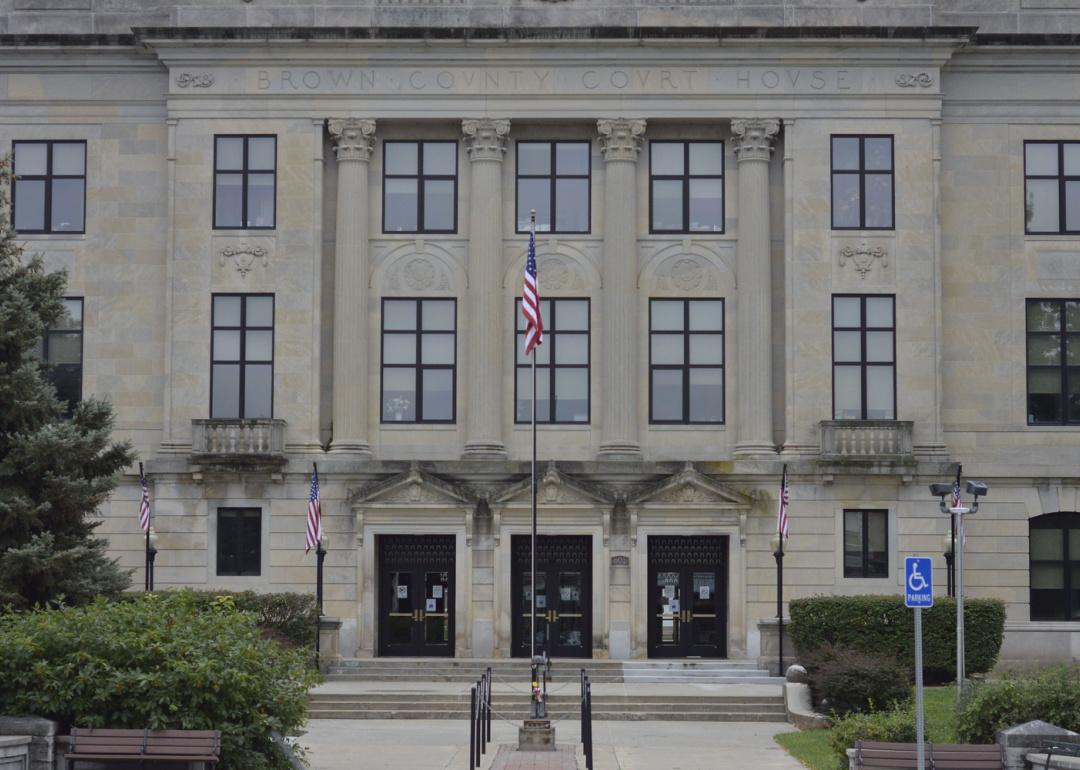
#24. Brown County, Kansas
– Overall Rank: 867
– Population: 9,486
– Median household income: $55,876
– Median home value: $108,700 (73% own)
– Median rent: $662 (27% rent)
– Top public schools: Hiawatha Middle School (grade B), Hiawatha Senior High School (grade B), Everest Middle School (grade B)
– Top private schools:
– Top places: Hiawatha (grade A minus), Morrill (grade A minus), Morrill Township (grade B+)
About
Brown County, Kansas is deeply rooted in agriculture, with a strong presence of crop farming and livestock production shaping its economy and daily life. Small towns in the county emphasize community values, education, and local events that bring residents together. A tradition of hard work and self-reliance defines the area’s character.
The landscape includes open farmland, wooded areas, and historic sites that reflect the region’s past and rural beauty. Cultural heritage is preserved through museums, festivals, and public landmarks honoring Native American and pioneer history. Brown County offers a stable, community-driven environment grounded in history and rural tradition.
Where is Brown County?

Brown County, Kansas, is located in the northeastern corner of the state, roughly 100 miles northwest of Kansas City and about 70 miles north of Topeka. The county seat, Hiawatha, lies near U.S. Highway 36 and is around 20 miles south of the Nebraska border. The county’s location offers access to both agricultural land and small towns.
It is approximately 50 miles west of St. Joseph, Missouri, making it close to the Missouri state line. Brown County is also about 130 miles northeast of Salina, placing it within reach of central Kansas. Its position makes it a key part of the state’s northeastern rural network.
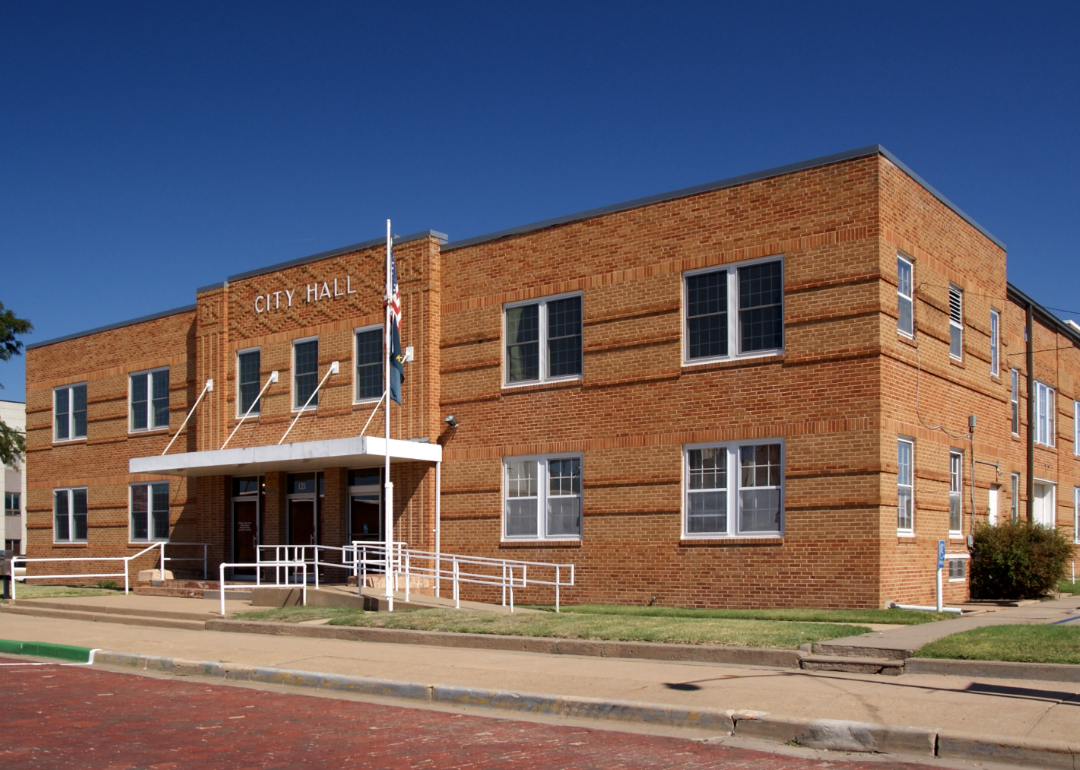
#23. Ellsworth County, Kansas
– Overall Rank: 841
– Population: 6,374
– Median household income: $59,844
– Median home value: $109,400 (81% own)
– Median rent: $675 (19% rent)
– Top public schools: Central Plains Elementary School – Holyrood (grade A minus), Kanopolis Middle School (grade B+), Wilson Junior/Senior High School (grade B)
– Top private schools:
– Top places: Ellsworth (grade B), Holyrood (grade A minus), Empire Township (grade A minus)
About
Ellsworth County, Kansas has a rich agricultural and cattle-ranching heritage that continues to shape its economy and identity. The community values its Western roots, with local events, schools, and small businesses contributing to a strong rural culture. Residents are proud of their history and maintain a close-knit, supportive environment.
The county features open landscapes, historic trails, and preserved architecture that highlight its frontier past. Recreational opportunities like hiking, wildlife viewing, and heritage tourism offer both relaxation and learning. With a blend of tradition, scenic beauty, and local pride, Ellsworth County reflects the enduring spirit of rural Kansas.
Where is Ellsworth County?

Ellsworth County, Kansas, is located in the central part of the state, approximately 90 miles north of Wichita and about 70 miles west of Salina. The county seat, Ellsworth, is situated along the Smoky Hill River and lies near Interstate 70, around 25 miles south of that major route. U.S. Highway 156 and K-14 provide primary access through the region.
The county is about 160 miles northwest of Topeka and roughly 200 miles east of the Colorado border. It lies around 60 miles southeast of Hays, giving it a central position within rural Kansas. The landscape is marked by rolling plains and historic cattle trail routes.
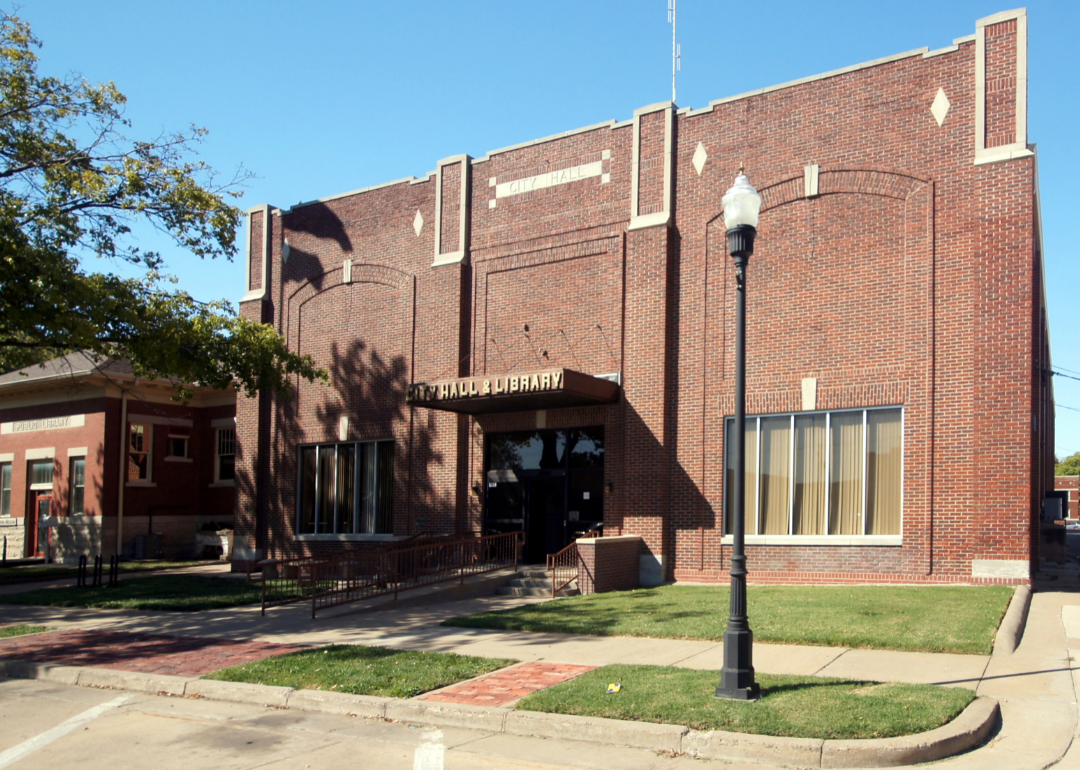
#22. Rice County, Kansas
– Overall Rank: 806
– Population: 9,441
– Median household income: $58,523
– Median home value: $87,700 (76% own)
– Median rent: $711 (24% rent)
– Top public schools: Sterling Junior/Senior High School (grade A minus), Sterling Grade School (grade A minus), Lyons High School (grade B minus)
– Top private schools:
– Top places: Lyons (grade B), Sterling Township (grade A), Valley Township (grade A)
About
Rice County, Kansas is built on a strong foundation of agriculture, with fertile farmland supporting grain production and livestock operations. The local economy also benefits from education, small industry, and community services that sustain rural life. Residents value their heritage, with close community ties and active participation in schools and civic events.
Wide-open landscapes, wetlands, and historic landmarks provide space for outdoor recreation and cultural exploration. Museums and annual celebrations reflect the county’s deep historical roots and agricultural legacy. With its mix of rural stability, tradition, and natural beauty, Rice County offers a peaceful and community-focused way of life.
Where is Rice County?

Rice County, Kansas, is located in the central part of the state, approximately 65 miles northwest of Wichita and about 30 miles west of Hutchinson. The county seat, Lyons, sits along K-96 and is around 90 miles southeast of Hays. Its position places it near the heart of the Kansas agricultural region.
The county is roughly 190 miles southwest of Topeka and about 170 miles north of the Oklahoma border. It is also around 110 miles east of the Colorado border. Rice County’s location supports easy access to both regional highways and rural communities across central Kansas.
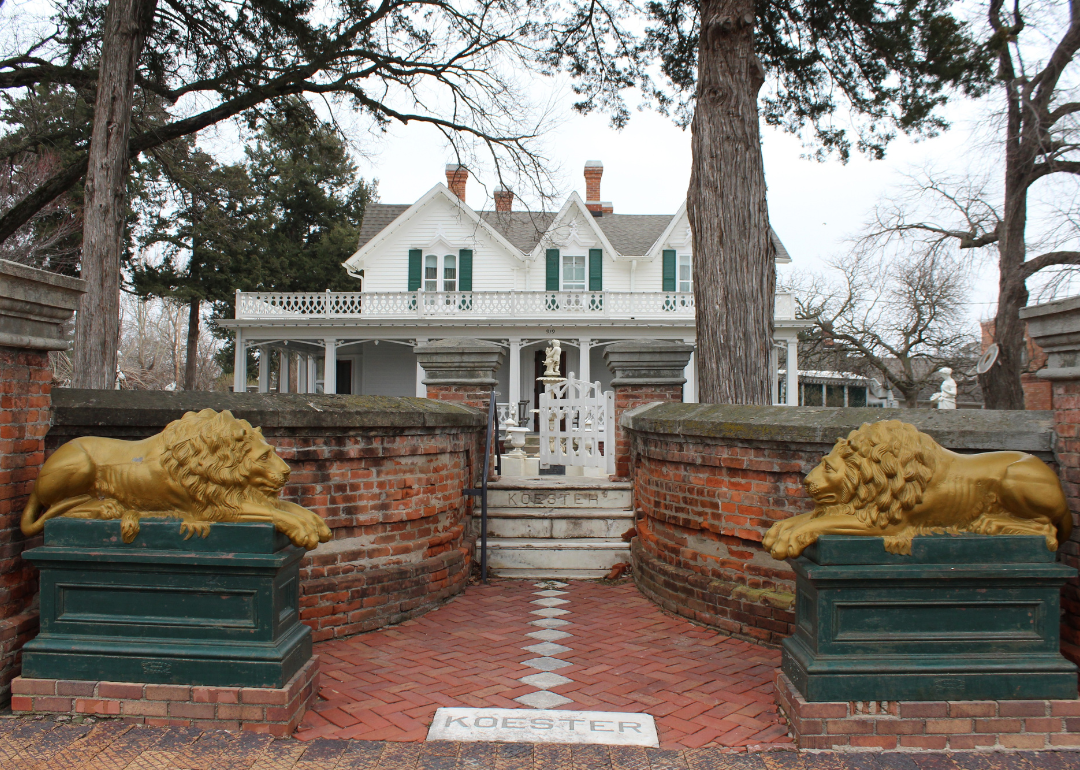
#21. Marshall County, Kansas
– Overall Rank: 801
– Population: 10,014
– Median household income: $64,306
– Median home value: $112,300 (82% own)
– Median rent: $671 (18% rent)
– Top public schools: Valley Heights Elementary School (grade A minus), Frankfort Elementary School (grade B+), Marysville Junior/Senior High School (grade B+)
– Top private schools: St. Gregory Catholic School (grade unavailable), Good Shepherd Lutheran School (grade unavailable)
– Top places: Marysville (grade A minus), Waterville Township (grade B+), Waterville (grade B+)
About
Marshall County, Kansas is grounded in agriculture, with a strong presence of crop farming, livestock, and agri-business supporting its local economy. Communities throughout the county take pride in their schools, local events, and small-town traditions that foster unity and resilience. The area blends rural heritage with a spirit of innovation and self-reliance.
The county features scenic prairies, historical landmarks, and parks that highlight both natural beauty and cultural legacy. Museums, festivals, and preserved architecture reflect the region’s pioneer history and deep community roots. With its focus on tradition, community strength, and quiet living, Marshall County offers a stable and welcoming rural lifestyle.
Where is Marshall County?

Marshall County, Kansas, is located in the northeastern part of the state, approximately 110 miles northwest of Topeka and about 70 miles west of St. Joseph, Missouri. The county seat, Marysville, lies along U.S. Highway 36 and is around 10 miles south of the Nebraska border. This area serves as a key connection point between Kansas and southeastern Nebraska.
It is roughly 150 miles north of Wichita and about 130 miles northeast of Salina. Marshall County is situated around 95 miles east of Hastings, Nebraska. Its position places it within the northern edge of Kansas farmland and along historic overland trail routes.
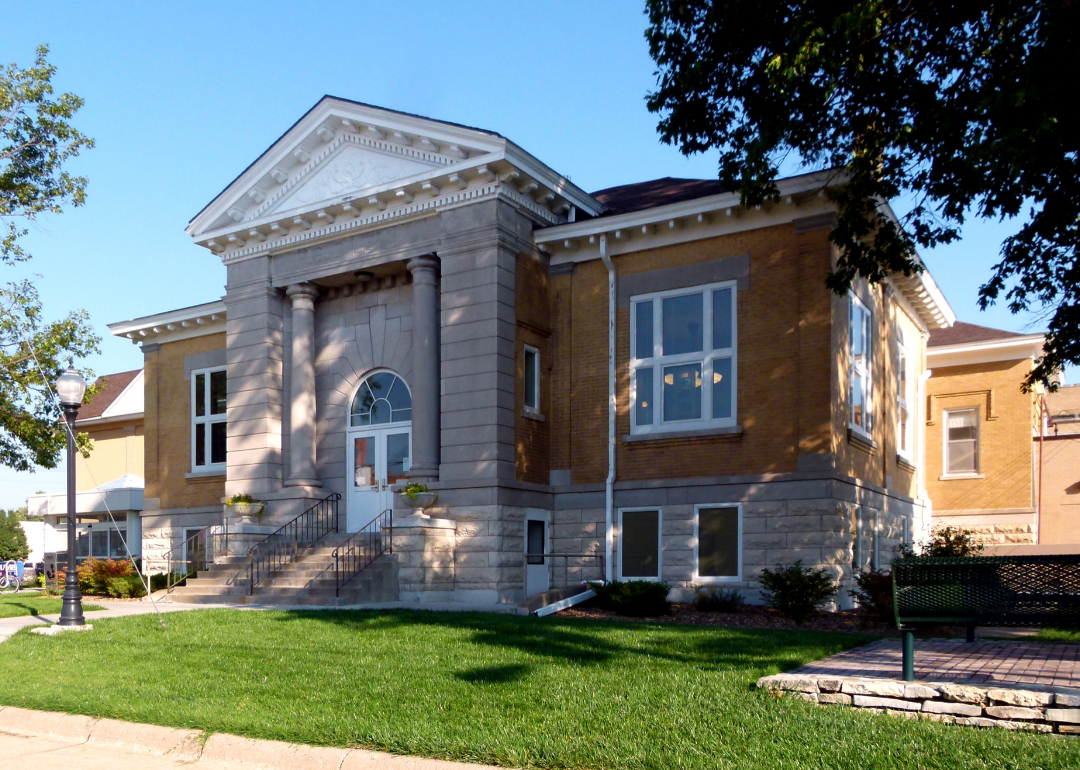
#20. Dickinson County, Kansas
– Overall Rank: 704
– Population: 18,492
– Median household income: $62,971
– Median home value: $137,000 (75% own)
– Median rent: $755 (25% rent)
– Top public schools: Chapman High School (grade A), Blue Ridge Elementary School (grade A minus), Hope Elementary School (grade B+)
– Top private schools: St. Andrew’s Elementary School (grade unavailable), Abilene Baptist Academy (grade unavailable)
– Top places: Abilene (grade B+), Garfield Township (grade B+), Chapman (grade B+)
About
Dickinson County, Kansas has a strong agricultural backbone, with farming and livestock operations playing a central role in its economy and culture. The county is also known for its rich historical significance, active community life, and support for education and local business. Residents take pride in their heritage and maintain strong ties through local events and civic participation.
Rolling plains, historical sites, and recreational spaces provide opportunities for outdoor activities and cultural engagement. Museums, preserved landmarks, and annual fairs showcase the region’s pioneer spirit and historical legacy. With a blend of rural tradition, community pride, and historical depth, Dickinson County offers a grounded and welcoming environment.
Where is Dickinson County?

Dickinson County, Kansas, is located in the central part of the state, approximately 95 miles north of Wichita and about 70 miles west of Topeka. The county seat, Abilene, lies just south of Interstate 70 and around 30 miles east of Salina. This location offers direct highway access to eastern and western Kansas.
It is roughly 165 miles southeast of Hays and about 200 miles southwest of Kansas City. Dickinson County is also around 150 miles north of the Oklahoma border. Its central location and historic significance make it a key hub in the Kansas prairie region.
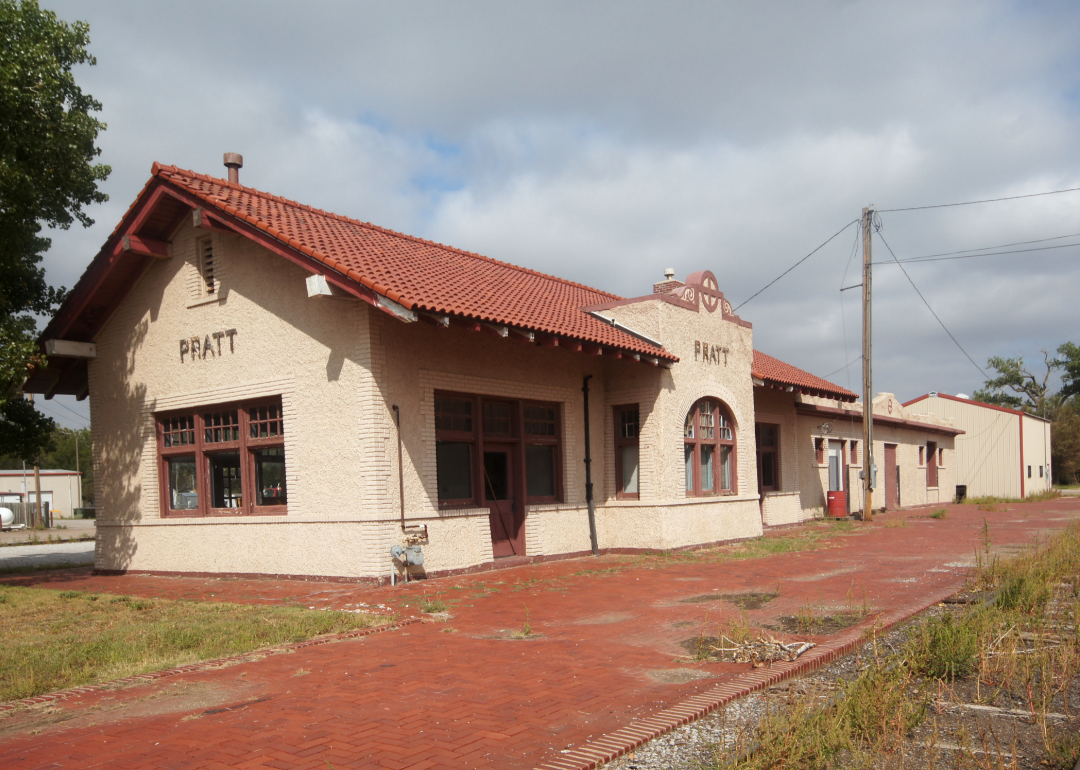
#19. Pratt County, Kansas
– Overall Rank: 685
– Population: 9,175
– Median household income: $61,685
– Median home value: $111,100 (70% own)
– Median rent: $763 (30% rent)
– Top public schools: Southwest Elementary School (grade B+), Liberty Middle School (grade B), Skyline High School (grade B)
– Top private schools: Sacred Heart School (grade unavailable)
– Top places: Pratt (grade B+), 6 Township (grade B+), 12 Township (grade B+)
About
Pratt County, Kansas is centered around agriculture, energy, and small industry, with farming and ranching forming the heart of its economy. The community is active and close-knit, with strong support for schools, local businesses, and civic organizations. Residents value tradition, hard work, and a cooperative spirit that defines everyday life.
The county features wide open landscapes, parks, and wildlife areas that encourage outdoor recreation and nature appreciation. Historical landmarks and cultural sites reflect the area’s pioneer roots and agricultural legacy. With a balance of rural strength, community pride, and scenic beauty, Pratt County offers a stable and welcoming environment.
Where is Pratt County?

Pratt County, Kansas, is located in the south-central region of the state, approximately 80 miles west of Wichita and about 90 miles south of Great Bend. The county seat, Pratt, sits along U.S. Highway 54 and is about 30 miles east of the Medicine Lodge area. Its location supports regional travel across southern Kansas.
The county is roughly 100 miles north of the Oklahoma border and about 220 miles southwest of Topeka. It lies approximately 140 miles southeast of Dodge City. Pratt County serves as an important center for agriculture and rural commerce in this part of the state.
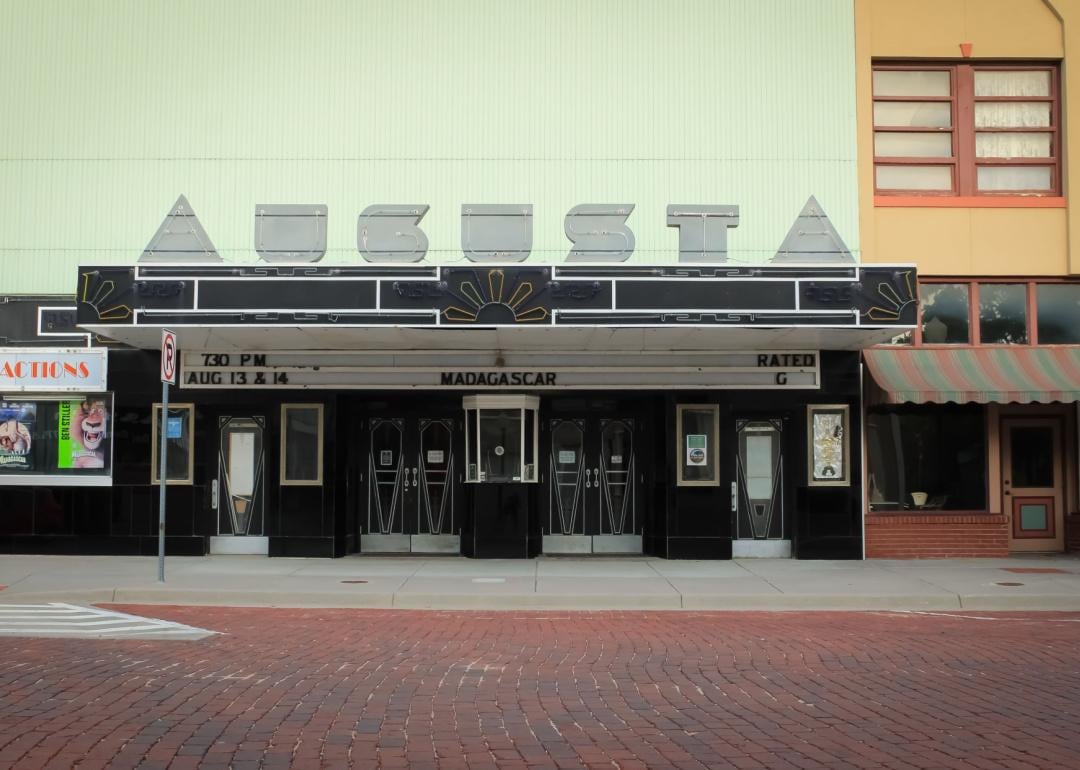
#18. Butler County, Kansas
– Overall Rank: 635
– Population: 67,618
– Median household income: $77,724
– Median home value: $181,700 (78% own)
– Median rent: $963 (22% rent)
– Top public schools: Robert M. Martin Elementary School (grade A), Andover Middle School (grade A), Andover Central Middle School (grade A)
– Top private schools: Berean Academy (grade B+), St. James Catholic School (grade unavailable), Andover KinderCare – Kansas (grade unavailable)
– Top places: Andover (grade A), Rose Hill (grade B+), El Dorado (grade B)
About
Butler County, Kansas is a blend of rural landscapes and growing communities, supported by agriculture, energy, and education. The local economy is strengthened by oil production, farming, and service industries, alongside expanding residential and commercial development. Residents value their schools, public services, and active participation in community events.
Rolling prairies, lakes, and parks offer ample space for outdoor recreation and family activities. Historic sites, cultural programs, and festivals celebrate the county’s heritage and small-town charm. With its combination of tradition, growth, and natural beauty, Butler County provides a balanced and vibrant lifestyle.
Where is Butler County?

Butler County, Kansas, is located in the south-central part of the state, approximately 25 miles east of Wichita and about 90 miles southwest of Emporia. The county seat, El Dorado, lies along U.S. Highway 54 and is around 50 miles north of the Oklahoma border. This makes it one of the largest counties by area in Kansas with easy access to major highways.
It is about 130 miles south of Topeka and roughly 170 miles southeast of Salina. The county is also approximately 200 miles north of Oklahoma City. Butler County’s position supports both suburban growth from Wichita and agricultural activity throughout the Flint Hills region.

#17. Geary County, Kansas
– Overall Rank: 552
– Population: 36,247
– Median household income: $57,992
– Median home value: $162,400 (43% own)
– Median rent: $1,132 (57% rent)
– Top public schools: Fort Riley Middle School (grade A), Spring Valley Elementary School (grade A minus), Milford Elementary School (grade A minus)
– Top private schools: St. Francis Xavier Catholic School (grade B+), Apostolic Academy (grade unavailable), Forsyth Child Development Center (grade unavailable)
– Top places: Grandview Plaza (grade B+), Junction City (grade B), Lyon Township (grade A)
About
Geary County, Kansas has a diverse economy supported by military presence, education, and a strong service sector. The community is shaped by a mix of long-time residents and newcomers, contributing to a dynamic and inclusive atmosphere. Local events, schools, and public programs reflect civic pride and cultural diversity.
Natural features such as lakes, trails, and woodlands provide abundant recreational opportunities and scenic beauty. Historic sites and museums highlight the county’s role in regional and military history. With its blend of tradition, resilience, and community spirit, Geary County maintains a vibrant and welcoming identity.
Where is Geary County?

Geary County, Kansas, is located in the northeastern part of the state, approximately 60 miles west of Topeka and about 20 miles east of Salina. The county seat, Junction City, lies near the junction of I-70 and U.S. Highway 77, around 10 miles from Fort Riley. Its location places it close to major transportation routes and military infrastructure.
It is roughly 115 miles north of Wichita and about 90 miles southwest of Kansas City. The county is also around 150 miles south of the Nebraska border. Geary County serves as a strategic hub for both civilian and military communities in central and northeastern Kansas.
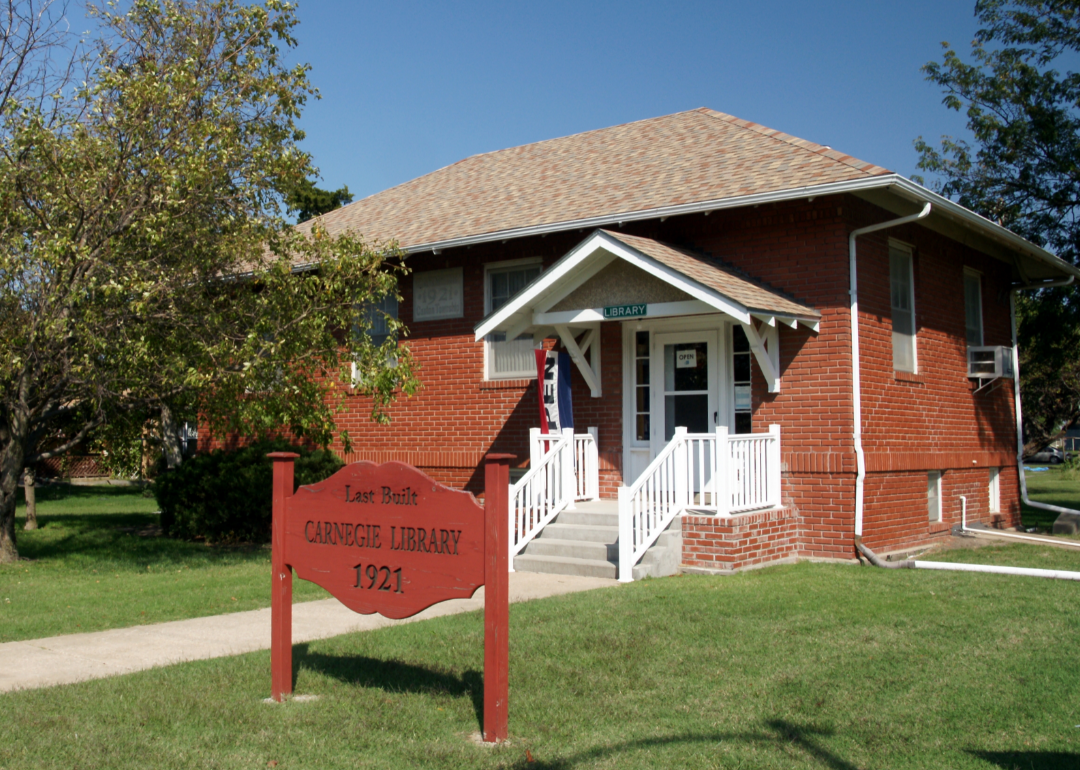
#16. McPherson County, Kansas
– Overall Rank: 537
– Population: 30,085
– Median household income: $71,250
– Median home value: $180,900 (74% own)
– Median rent: $871 (26% rent)
– Top public schools: Soderstrom Elementary School (grade B+), Moundridge Middle School (grade B), Windom Elementary School (grade B)
– Top private schools: Elyria Christian School (grade C+), St. Joseph Elementary School (grade unavailable)
– Top places: Lindsborg (grade A), McPherson (grade B+), King City Township (grade A minus)
About
McPherson County, Kansas is known for its strong agricultural roots, robust manufacturing sector, and a focus on education and community development. The local economy thrives on crop production, industry, and small businesses that support both rural and urban lifestyles. Residents value their close-knit communities, quality schools, and active civic engagement.
The county features scenic countryside, parks, and cultural landmarks that highlight its heritage and natural charm. Festivals, historical sites, and arts programs celebrate local traditions and shared history. With a balance of progress, rural character, and strong community values, McPherson County offers a stable and vibrant environment.
Where is McPherson County?
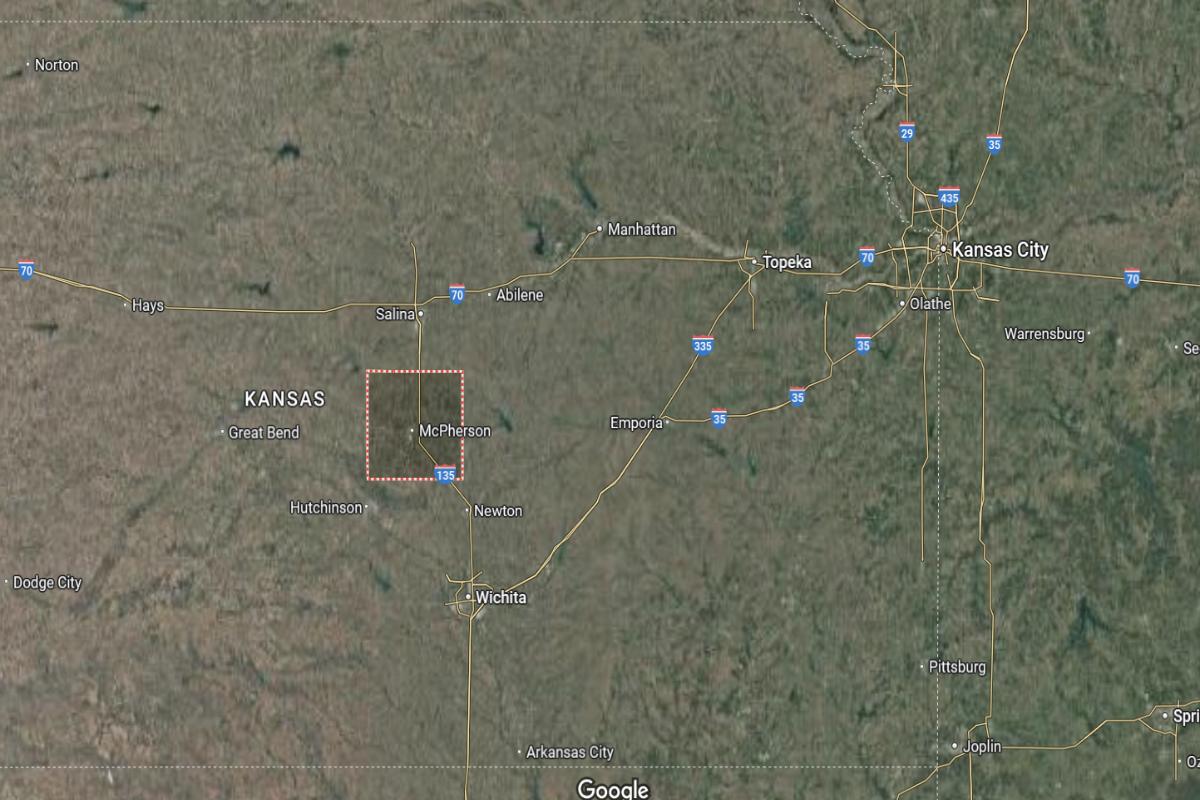
McPherson County, Kansas, is located in the central part of the state, approximately 60 miles north of Wichita and about 40 miles southeast of Salina. The county seat, McPherson, sits near the intersection of I-135 and U.S. Highway 56, providing strong regional access. Its location supports both agriculture and manufacturing activity in central Kansas.
It is around 110 miles southwest of Topeka and approximately 160 miles north of the Oklahoma border. The county is also about 190 miles east of the Colorado border. McPherson County lies at a key junction between Kansas’s rural areas and its central urban corridors.
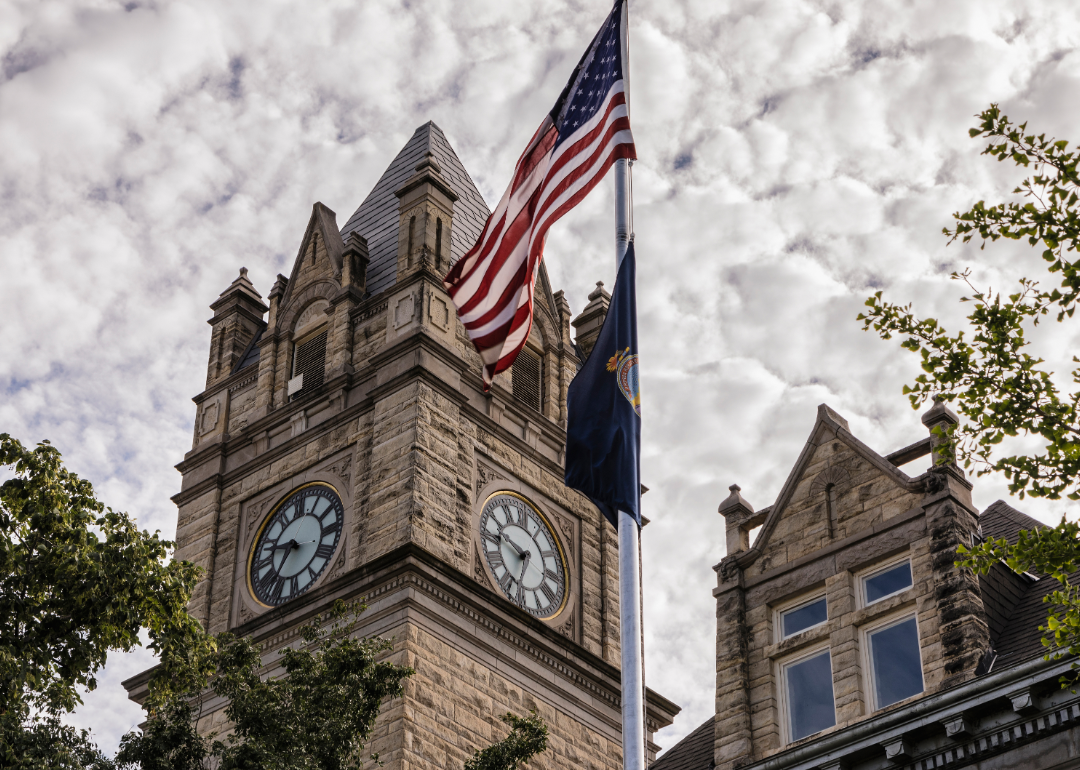
#15. Marion County, Kansas
– Overall Rank: 505
– Population: 11,867
– Median household income: $60,011
– Median home value: $114,700 (81% own)
– Median rent: $680 (19% rent)
– Top public schools: Goessel Elementary School (grade A minus), Hillsboro Middle/High School (grade A minus), Hillsboro Elementary School (grade B+)
– Top private schools:
– Top places: Hillsboro (grade A), Centre Township (grade A), Blaine Township (grade A)
About
Marion County, Kansas is rooted in agriculture, with farming and ranching playing a central role in its economy and way of life. Small towns throughout the county support strong community bonds, with local schools, businesses, and events fostering pride and tradition. Residents value independence, hard work, and a connection to the land.
The county features scenic landscapes, rolling hills, and historic architecture that reflect its pioneer heritage. Outdoor recreation, including fishing, hiking, and community festivals, enriches the area’s rural lifestyle. With its blend of tradition, natural beauty, and community spirit, Marion County offers a peaceful and grounded environment.
Where is Marion County?
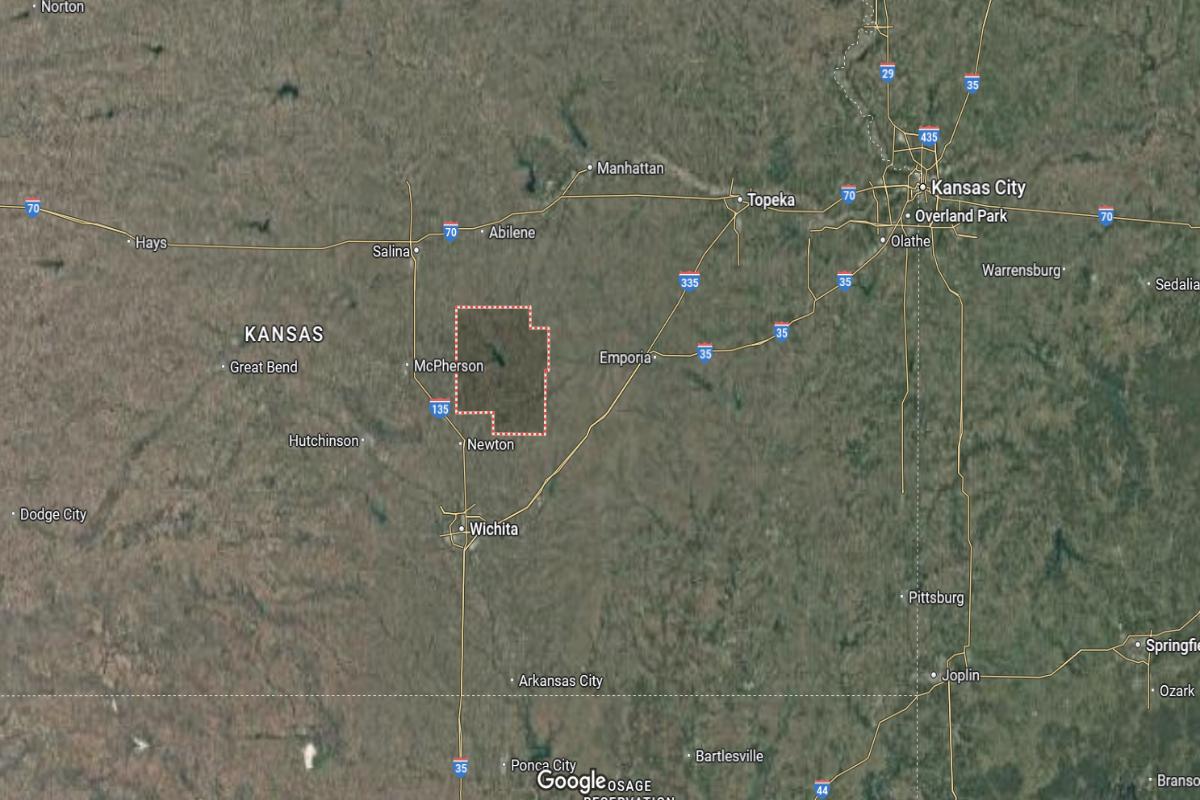
Marion County, Kansas, is located in the central part of the state, approximately 60 miles north of Wichita and about 70 miles southwest of Topeka. The county seat, Marion, is situated near U.S. Highway 56 and K-15, around 40 miles east of McPherson. Its location provides easy access to both Flint Hills and central Kansas farmland.
It is roughly 120 miles south of the Nebraska border and about 160 miles east of the Colorado border. The county is also approximately 100 miles northwest of the Oklahoma border. Marion County’s position offers a rural setting with strong links to nearby regional centers.
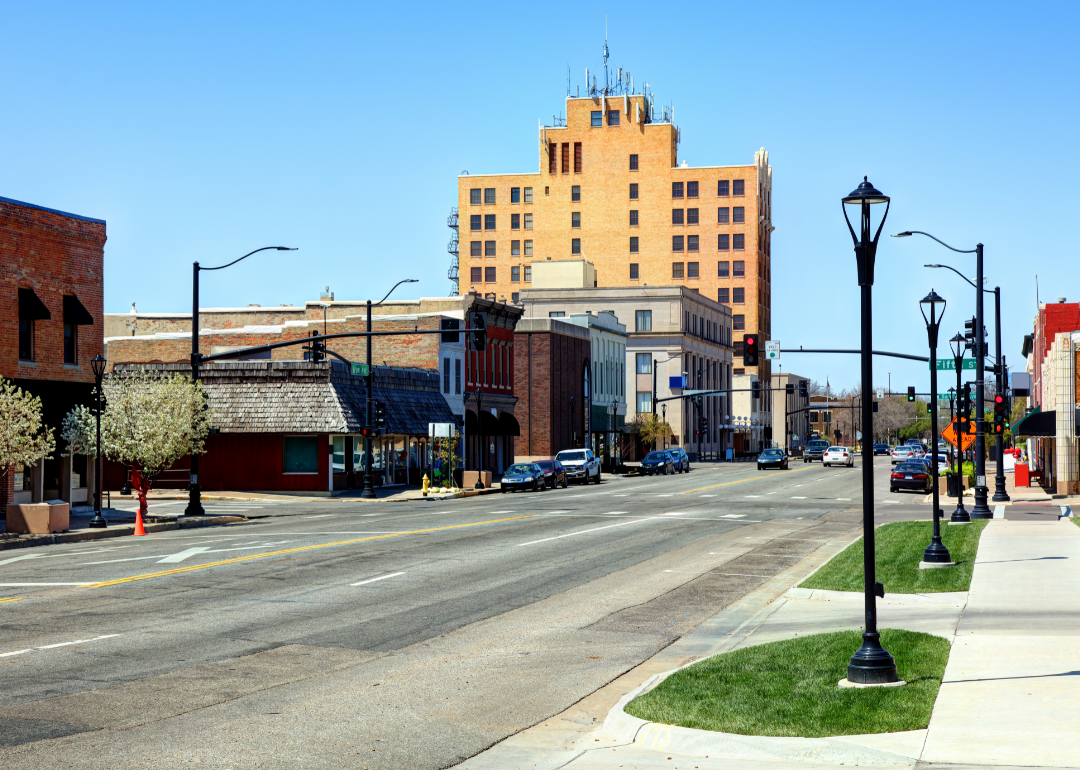
#14. Saline County, Kansas
– Overall Rank: 490
– Population: 54,160
– Median household income: $59,887
– Median home value: $161,900 (67% own)
– Median rent: $869 (33% rent)
– Top public schools: Southeast Saline High School (grade A minus), Stewart Elementary School (grade B), Southeast Saline Elementary School (grade B)
– Top private schools: Sacred Heart Junior/Senior High School (grade C+), St. Mary Queen of the Universe Grade School (grade unavailable)
– Top places: Salina (grade B+), Assaria (grade A minus), Smoky Hill Township (grade A minus)
About
Saline County, Kansas features a diverse economy supported by agriculture, manufacturing, education, and healthcare. The county seat serves as a regional hub for business, culture, and public services, drawing both residents and visitors. Community life is enriched by strong schools, arts programs, and local events that reflect a blend of tradition and progress.
Expansive plains, parks, and recreation areas offer space for outdoor activities and family gatherings. Historical landmarks and cultural institutions highlight the area’s deep roots and evolving identity. With its combination of economic strength, community pride, and rural charm, Saline County offers a balanced and welcoming lifestyle.
Where is Saline County?
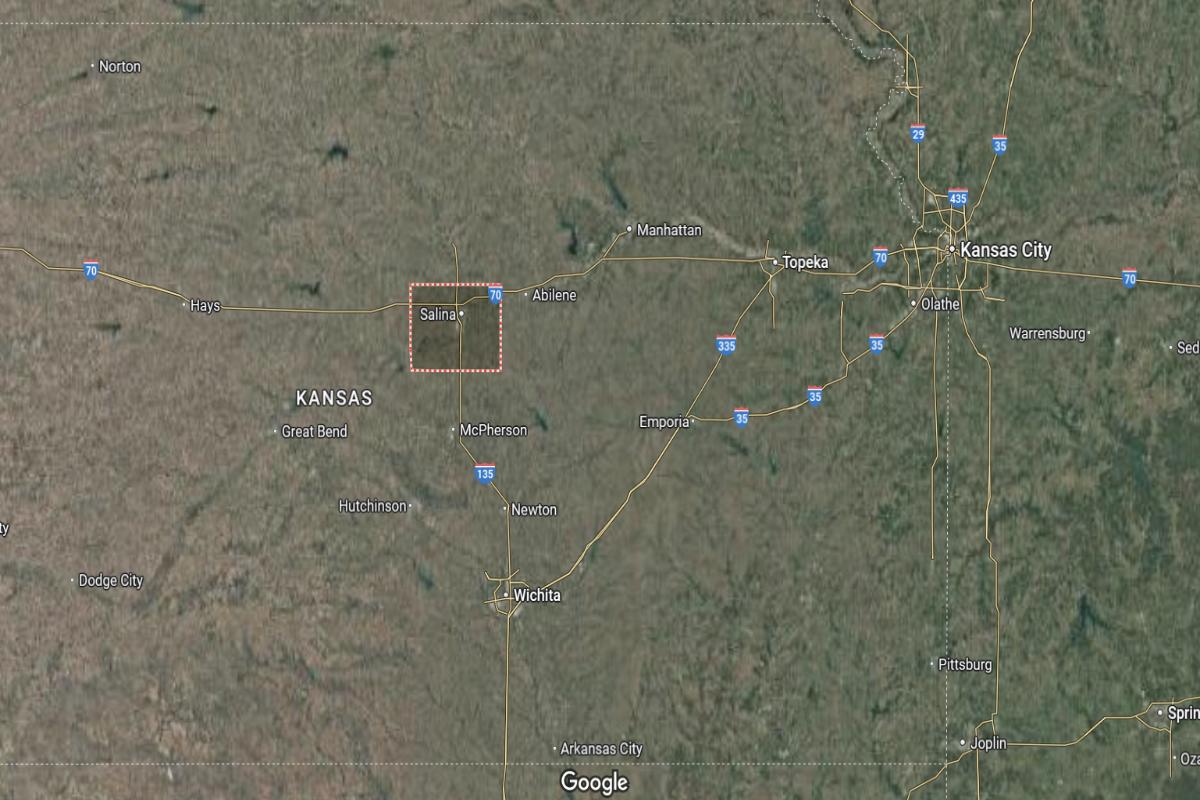
Saline County, Kansas, is located in the central part of the state, approximately 90 miles north of Wichita and about 95 miles west of Topeka. The county seat, Salina, lies at the intersection of I-70 and I-135, making it a major transportation hub. It is around 15 miles west of Abilene and 40 miles east of Russell.
The county is roughly 180 miles east of the Colorado border and about 130 miles south of the Nebraska border. Saline County is also approximately 160 miles northwest of Kansas City. Its central location and highway access support both industrial growth and regional connectivity.
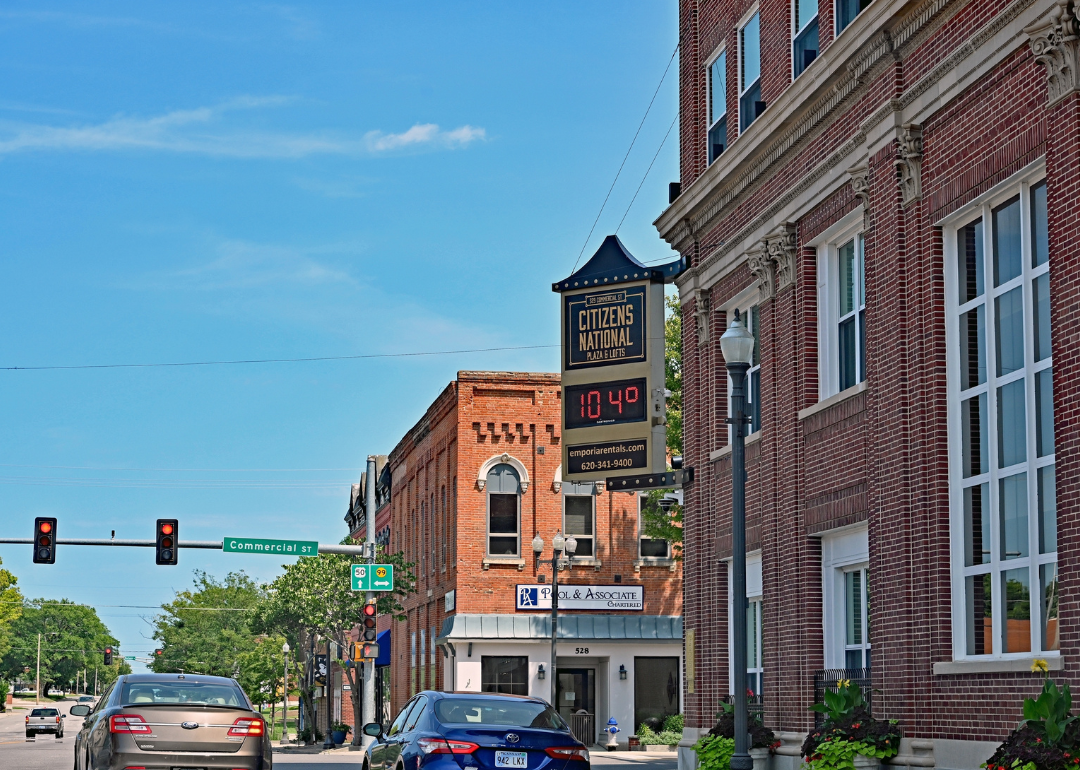
#13. Lyon County, Kansas
– Overall Rank: 471
– Population: 32,182
– Median household income: $56,415
– Median home value: $136,100 (58% own)
– Median rent: $763 (42% rent)
– Top public schools: Olpe Junior/Senior High School (grade B+), Emporia High School (grade B), Timmerman Elementary School (grade B)
– Top private schools: Sacred Heart School (grade unavailable), Emporia Christian School (grade unavailable)
– Top places: Emporia (grade A minus), Center Township (grade A minus), Olpe (grade A minus)
About
Lyon County, Kansas is anchored by a strong educational presence, manufacturing base, and agricultural tradition. The local economy is supported by industry, public services, and a diverse workforce that contributes to a stable and active community. Residents value education, cultural events, and civic involvement as key parts of everyday life.
The county offers scenic landscapes, parks, and recreational areas that promote outdoor activity and relaxation. Historic landmarks and festivals reflect its pioneer heritage and multicultural identity. With a blend of rural charm, economic vitality, and community spirit, Lyon County maintains a balanced and inviting atmosphere.
Where is Lyon County?
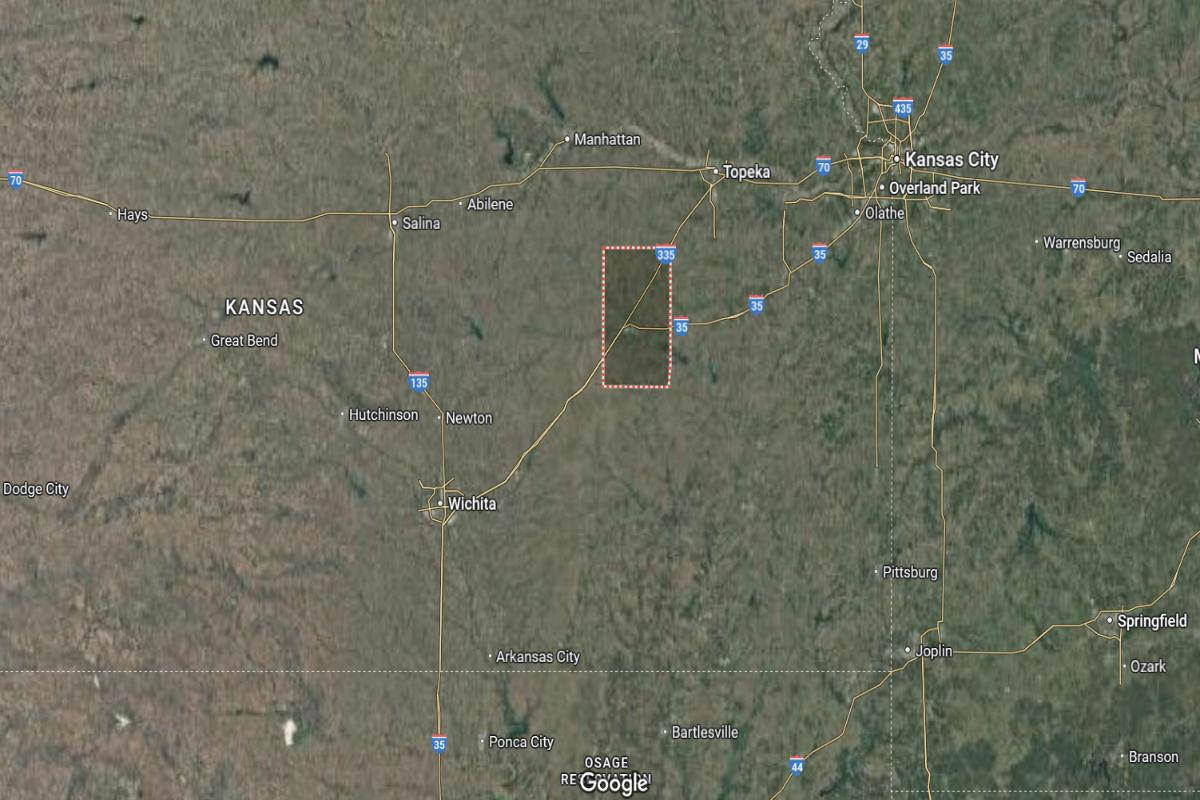
Lyon County, Kansas, is located in the east-central part of the state, approximately 60 miles southwest of Topeka and about 90 miles northeast of Wichita. The county seat, Emporia, lies along I-35 and U.S. Highway 50, offering key east-west and north-south routes. It is around 50 miles east of McPherson and 40 miles north of Marion.
The county is roughly 140 miles south of the Nebraska border and about 180 miles east of the Colorado border. Lyon County is also approximately 110 miles northwest of Kansas City. Its location places it at a crossroads of trade, education, and transportation in central Kansas.
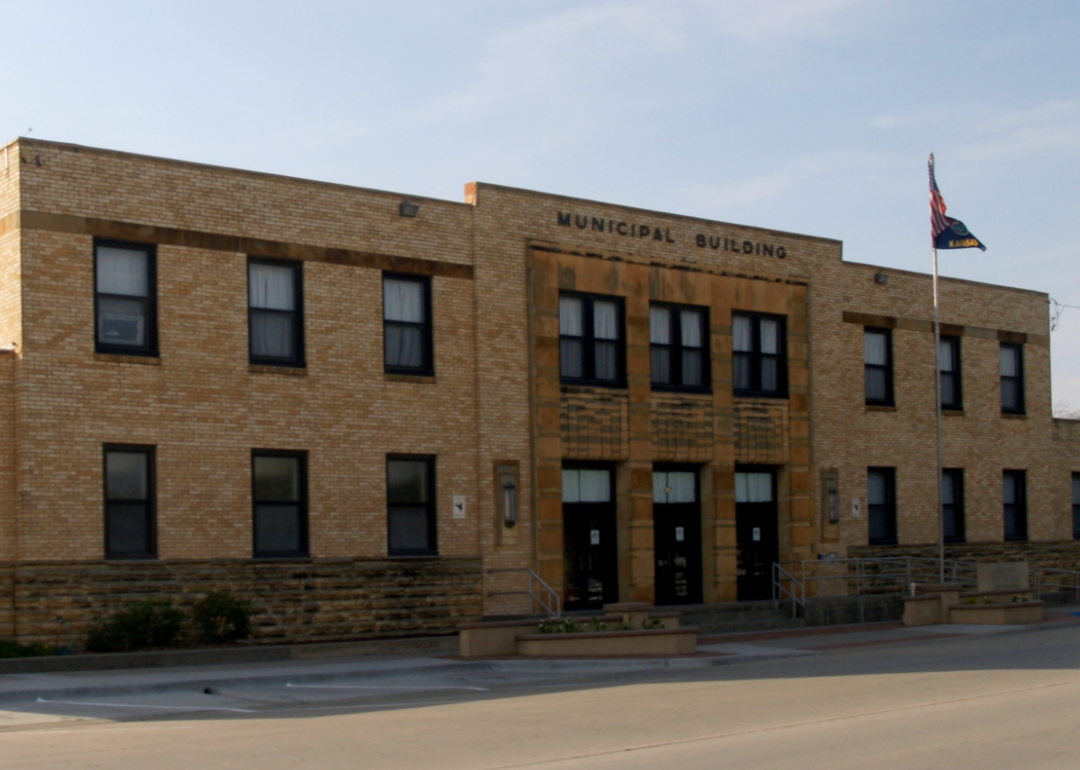
#12. Mitchell County, Kansas
– Overall Rank: 439
– Population: 5,829
– Median household income: $63,008
– Median home value: $100,700 (76% own)
– Median rent: $668 (24% rent)
– Top public schools: Tipton Community School (grade A minus), Lakeside Elementary School (grade B+), Beloit Junior/Senior High School (grade B)
– Top private schools: Tipton Catholic High School (grade A minus), St John’s Catholic School (grade B+), St John’s Catholic Middle/High School (grade B minus)
– Top places: Beloit (grade B+), Pittsburg Township (grade A minus), Beloit Township (grade B+)
About
Mitchell County, Kansas is rooted in agriculture, energy, and education, forming a stable foundation for its local economy. The community values tradition, with strong support for schools, local businesses, and public institutions. Residents enjoy a close-knit environment where civic pride and cooperation are central to daily life.
The county features rolling landscapes, lakes, and parks that provide opportunities for fishing, boating, and outdoor recreation. Historic sites and cultural programs celebrate its pioneer heritage and rural identity. With a blend of natural beauty, economic resilience, and community spirit, Mitchell County offers a peaceful and connected way of life.
Where is Mitchell County?
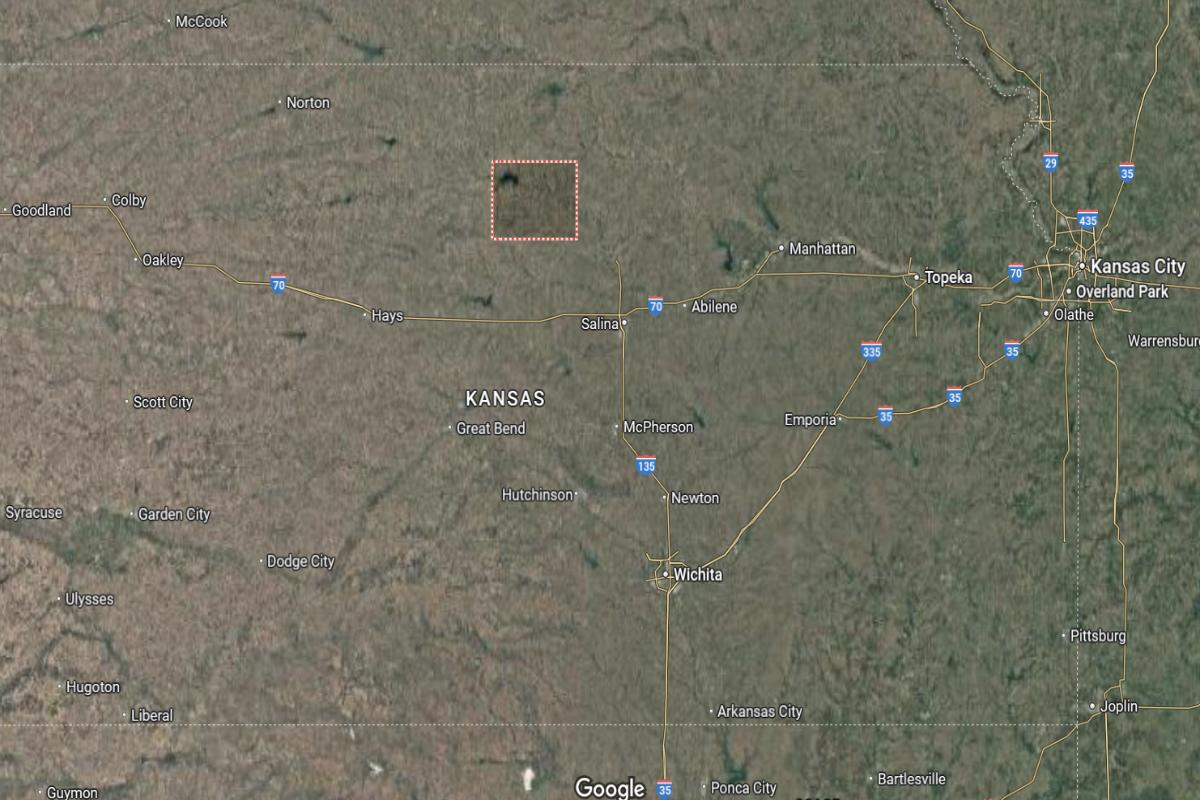
Mitchell County, Kansas, is located in the north-central part of the state, approximately 70 miles north of Salina and about 160 miles northwest of Topeka. The county seat, Beloit, sits near U.S. Highway 24 and K-14, around 35 miles west of Concordia. Its position places it in the heart of Kansas’s agricultural region.
The county is roughly 100 miles south of the Nebraska border and about 190 miles east of the Colorado border. It is also approximately 140 miles north of Wichita. Mitchell County serves as a rural hub with strong ties to farming and local trade across north-central Kansas.
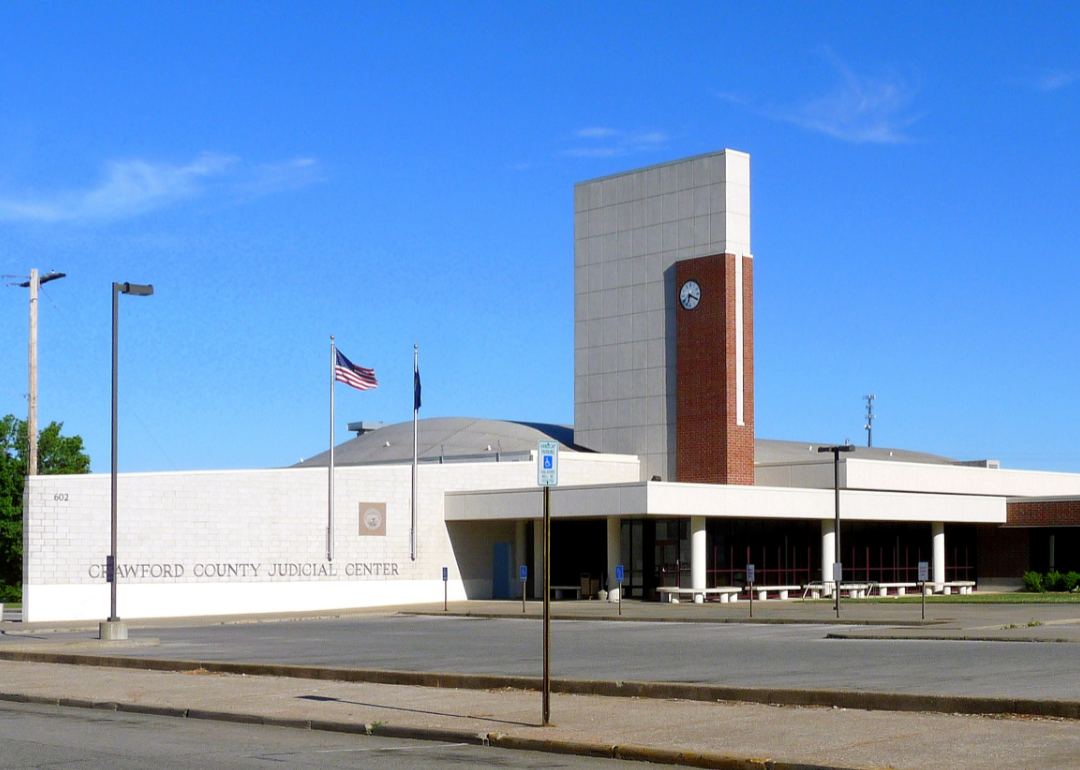
#11. Crawford County, Kansas
– Overall Rank: 414
– Population: 39,012
– Median household income: $49,779
– Median home value: $114,100 (59% own)
– Median rent: $821 (41% rent)
– Top public schools: Girard Middle School (grade B+), R.V. Haderlein Elementary School (grade B+), Frontenac High School (grade B)
– Top private schools: St. Mary’s Colgan Catholic Schools High School (grade B), St. Mary’s Colgan School (grade C), Countryside Christian School (grade unavailable)
– Top places: Pittsburg (grade B+), Frontenac (grade B), Girard (grade B minus)
About
Crawford County, Kansas is known for its strong educational institutions, cultural diversity, and deep-rooted industrial and mining history. The local economy benefits from higher education, healthcare, and small businesses that support both urban and rural communities. Residents take pride in their heritage, with a strong emphasis on community events, school spirit, and public engagement.
The county features scenic parks, trails, and recreational areas that encourage outdoor activities year-round. Historic districts, ethnic festivals, and local museums reflect a rich cultural blend and proud working-class tradition. With its mix of history, education, and community vitality, Crawford County offers a dynamic and welcoming environment.
Where is Crawford County?
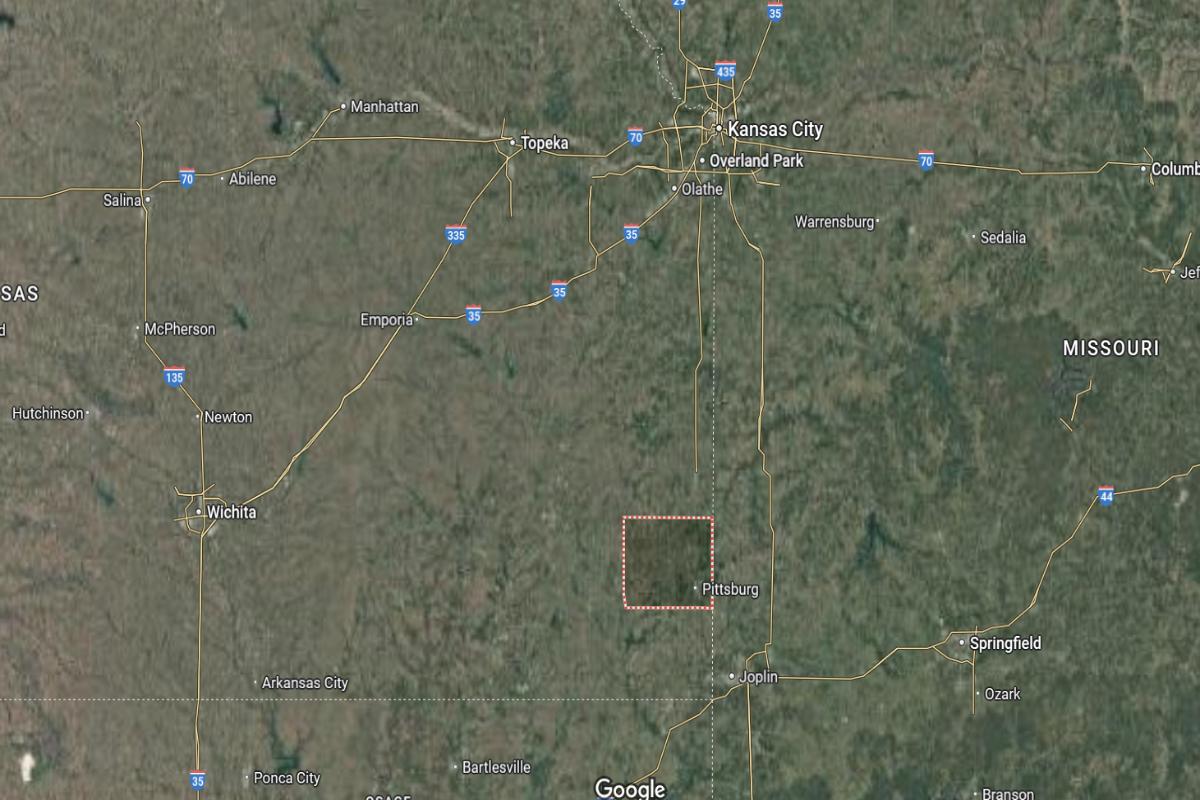
Crawford County, Kansas, is located in the southeastern corner of the state, approximately 120 miles south of Kansas City and about 140 miles east of Wichita. The county seat, Girard, lies around 30 miles northwest of Joplin, Missouri, and near U.S. Highway 69. The city of Pittsburg, the largest in the county, is about 10 miles from the Missouri border.
The county is roughly 90 miles north of Tulsa, Oklahoma, and about 200 miles southeast of Topeka. It is also approximately 160 miles east of Hutchinson. Crawford County sits at a strategic junction near the Kansas-Missouri-Oklahoma tri-state area.
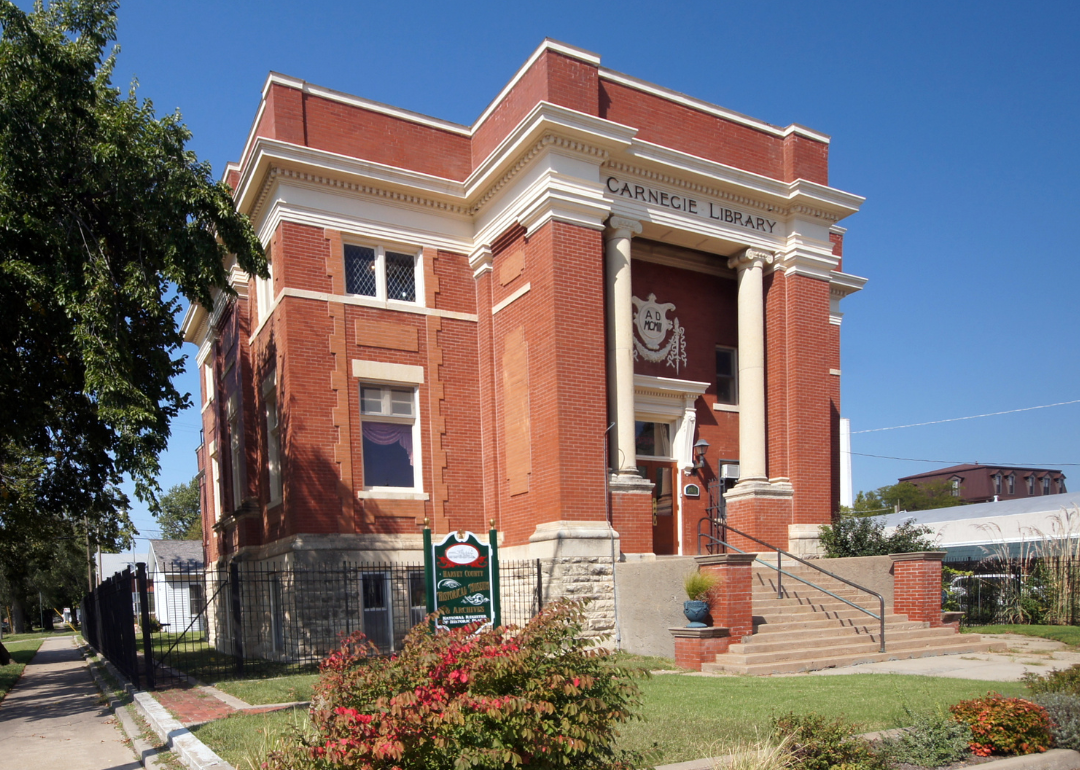
#10. Harvey County, Kansas
– Overall Rank: 398
– Population: 33,959
– Median household income: $70,685
– Median home value: $160,100 (71% own)
– Median rent: $857 (29% rent)
– Top public schools: Hesston Elementary School (grade A minus), Hesston High School (grade A minus), Hesston Middle School (grade A minus)
– Top private schools: St. Mary Catholic School (grade unavailable), Newton Bible Christian School (grade unavailable), Prairie View Special Purpose School (grade unavailable)
– Top places: Hesston (grade A+), North Newton (grade A), Newton (grade B+)
About
Harvey County, Kansas is supported by a diverse economy rooted in agriculture, manufacturing, education, and healthcare. Its communities value strong public schools, local business development, and active civic participation. Residents enjoy a balanced lifestyle that blends small-town charm with modern amenities and cultural opportunities.
The county features scenic trails, parks, and recreational spaces that promote outdoor living and community events. Historical landmarks and museums preserve its pioneer and railroad heritage. With a focus on tradition, innovation, and quality of life, Harvey County fosters a connected and resilient environment.
Where is Harvey County?

Harvey County, Kansas, is located in the south-central part of the state, approximately 30 miles north of Wichita and about 100 miles southwest of Topeka. The county seat, Newton, sits along I-135 and U.S. Highway 50, providing strong north-south and east-west access. It is around 25 miles south of McPherson and 60 miles east of Hutchinson.
The county is roughly 140 miles north of the Oklahoma border and about 170 miles east of the Colorado border. Harvey County is also approximately 190 miles southwest of Kansas City. Its central location supports both agricultural and industrial connections in the region.
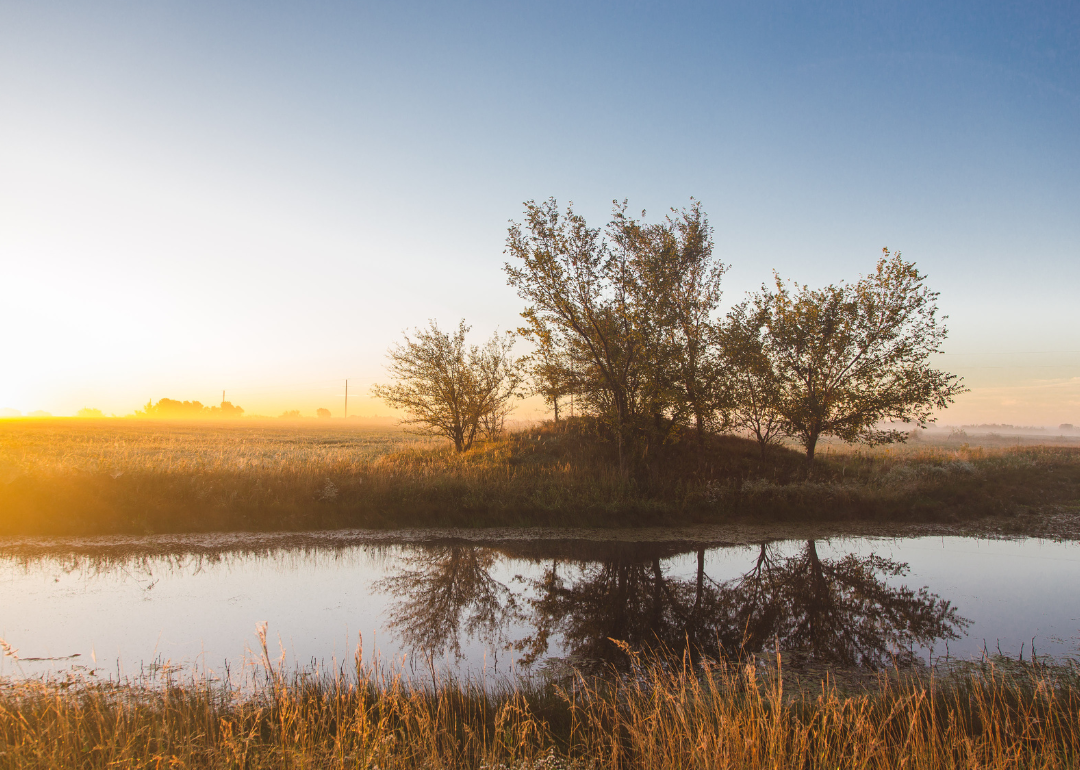
#9. Nemaha County, Kansas
– Overall Rank: 357
– Population: 10,219
– Median household income: $72,788
– Median home value: $174,500 (77% own)
– Median rent: $780 (23% rent)
– Top public schools: Centralia Elementary School (grade A minus), Sabetha Elementary School (grade A minus), Sabetha Middle School (grade A minus)
– Top private schools: Sts. Peter & Paul School (grade unavailable)
– Top places: Sabetha (grade A minus), Washington Township (grade A), Bern (grade A minus)
About
Nemaha County, Kansas is deeply rooted in agriculture, with fertile farmland supporting crop production and livestock operations that drive the local economy. The community is known for its strong family values, school pride, and close-knit small towns. Local events, churches, and volunteer efforts play a key role in uniting residents.
The county offers scenic rural landscapes, quiet roads, and historic buildings that reflect its pioneer past. Outdoor recreation, local museums, and annual festivals add to the area’s charm and cultural richness. With a blend of heritage, rural strength, and community spirit, Nemaha County offers a peaceful and grounded way of life.
Where is Nemaha County?

Nemaha County, Kansas, is located in the northeastern part of the state, approximately 90 miles northwest of Topeka and about 75 miles north of Manhattan. The county seat, Seneca, lies near U.S. Highway 36 and is around 15 miles south of the Nebraska border. It is positioned within a rural farming region with strong local road connections.
The county is roughly 120 miles west of St. Joseph, Missouri, and about 160 miles north of Wichita. Nemaha County is also approximately 180 miles northwest of Kansas City. Its location places it near the Kansas-Nebraska border and within reach of several key cities in the central plains.
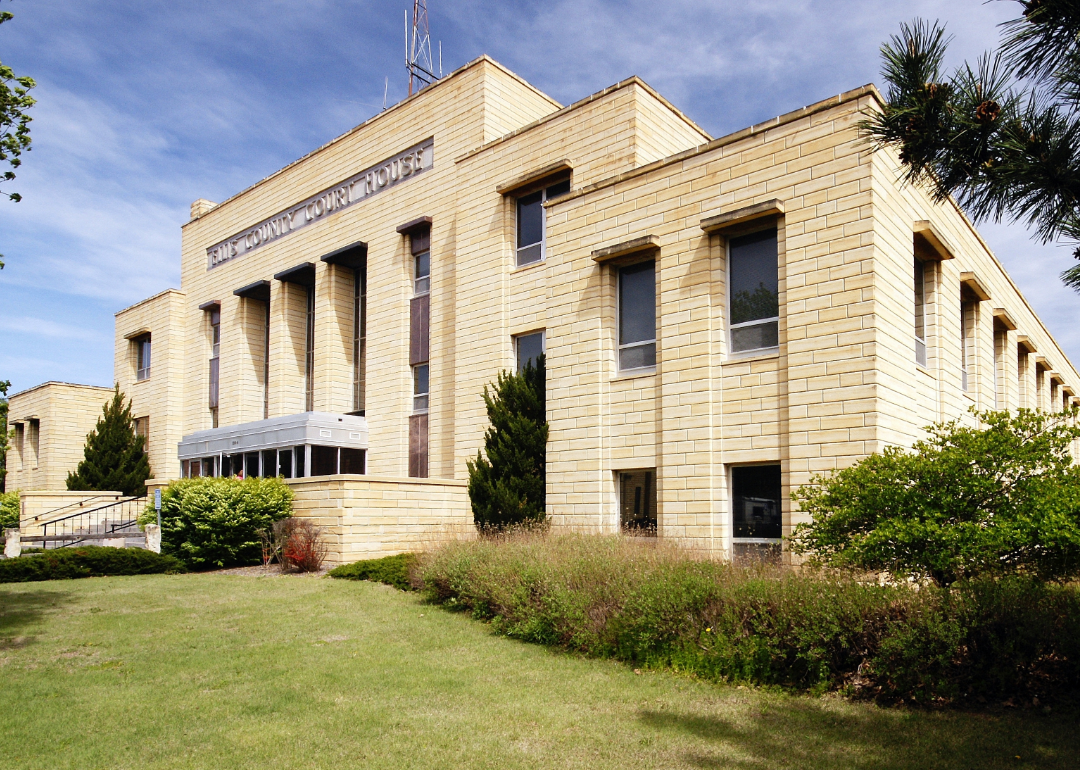
#8. Ellis County, Kansas
– Overall Rank: 323
– Population: 28,921
– Median household income: $59,665
– Median home value: $199,100 (61% own)
– Median rent: $864 (39% rent)
– Top public schools: Kathryn O’Loughlin McCarthy Elementary School (grade A minus), Hays Middle School (grade B+), Washington Elementary School (grade B+)
– Top private schools: Thomas More Prep-Marian High School (grade B+), Holy Family Elementary School (grade unavailable), St. Mary’s School (grade unavailable)
– Top places: Hays (grade B+), Buckeye Township (grade A minus), Big Creek Township (grade A minus)
About
Ellis County, Kansas is a regional center for education, energy, and healthcare, with a strong foundation in agriculture and industry. The local economy is supported by a major university, medical facilities, and a mix of retail and manufacturing. Communities in the county take pride in their cultural heritage, academic influence, and active civic life.
Scenic plains, parks, and historical landmarks provide opportunities for outdoor activities and exploration. Cultural festivals, museums, and preserved architecture reflect the area’s immigrant roots and frontier legacy. With a balance of tradition, innovation, and community engagement, Ellis County offers a vibrant and welcoming environment.
Where is Ellis County?
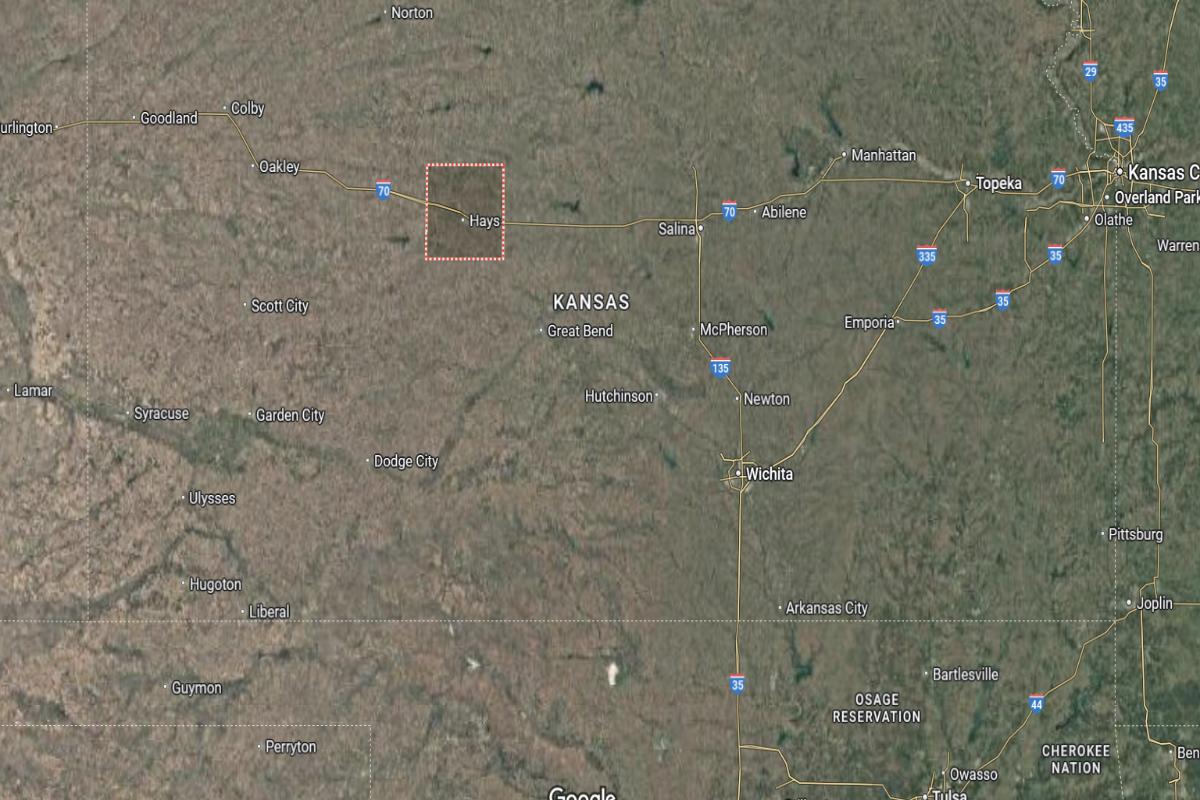
Ellis County, Kansas, is located in the western half of the state, approximately 100 miles west of Salina and about 260 miles west of Topeka. The county seat, Hays, sits along Interstate 70 and is roughly 90 miles east of the Colorado border. It is also around 55 miles north of Dodge City.
The county is approximately 180 miles northwest of Wichita and about 150 miles south of the Nebraska border. Ellis County’s location along I-70 makes it a major stop between central and western Kansas. It serves as a regional center for education, healthcare, and transportation in western Kansas.
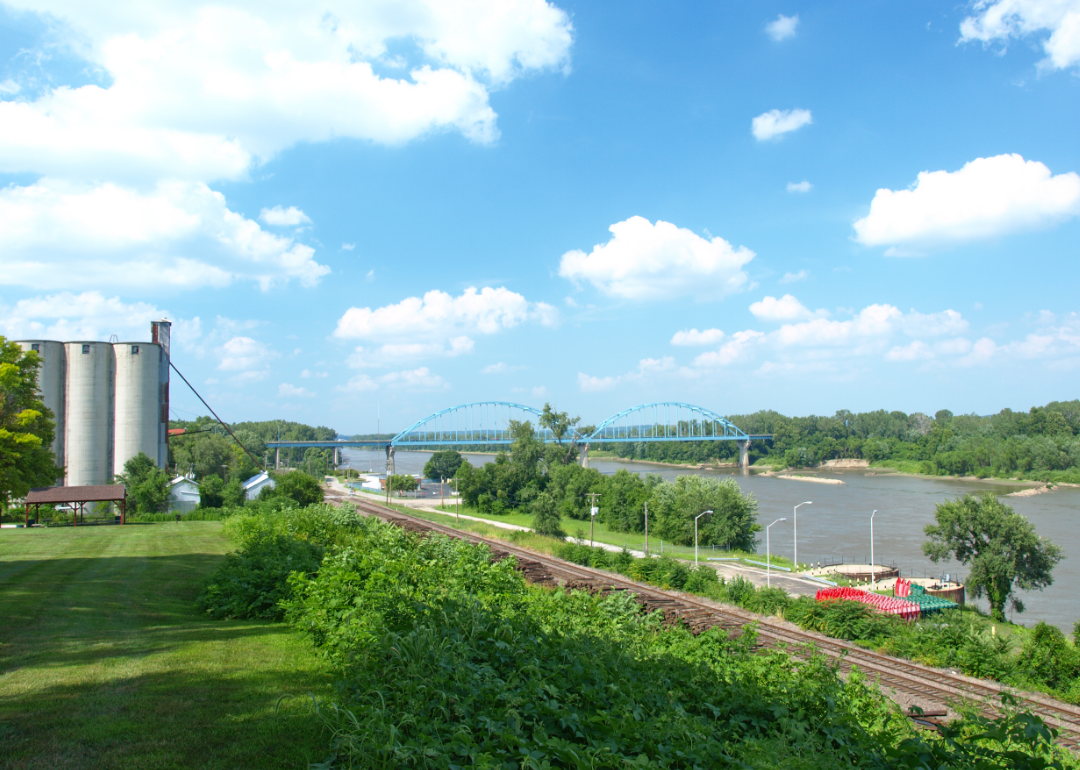
#7. Leavenworth County, Kansas
– Overall Rank: 256
– Population: 82,050
– Median household income: $84,307
– Median home value: $240,800 (68% own)
– Median rent: $1,102 (32% rent)
– Top public schools: Patton Junior High School (grade A), Bradley Elementary School (grade A), Eisenhower Elementary School (grade A)
– Top private schools: Xavier Catholic School (grade unavailable), St. Paul Lutheran School (grade unavailable), Guidepost Montessori at Leavenworth (grade unavailable)
– Top places: Lansing (grade A minus), Basehor (grade A minus), Leavenworth (grade A minus)
About
Leavenworth County, Kansas blends historic significance with modern development, supported by a diverse economy that includes government, education, and small business. The area is known for its military presence, strong civic institutions, and a deep sense of community pride. Residents value education, heritage, and active participation in local events and programs.
The county offers scenic river views, parks, and trails that encourage outdoor recreation and leisure. Historic buildings, museums, and cultural landmarks highlight its role in early American history. With its combination of tradition, service, and steady growth, Leavenworth County maintains a vibrant and connected community.
Where is Leavenworth County?
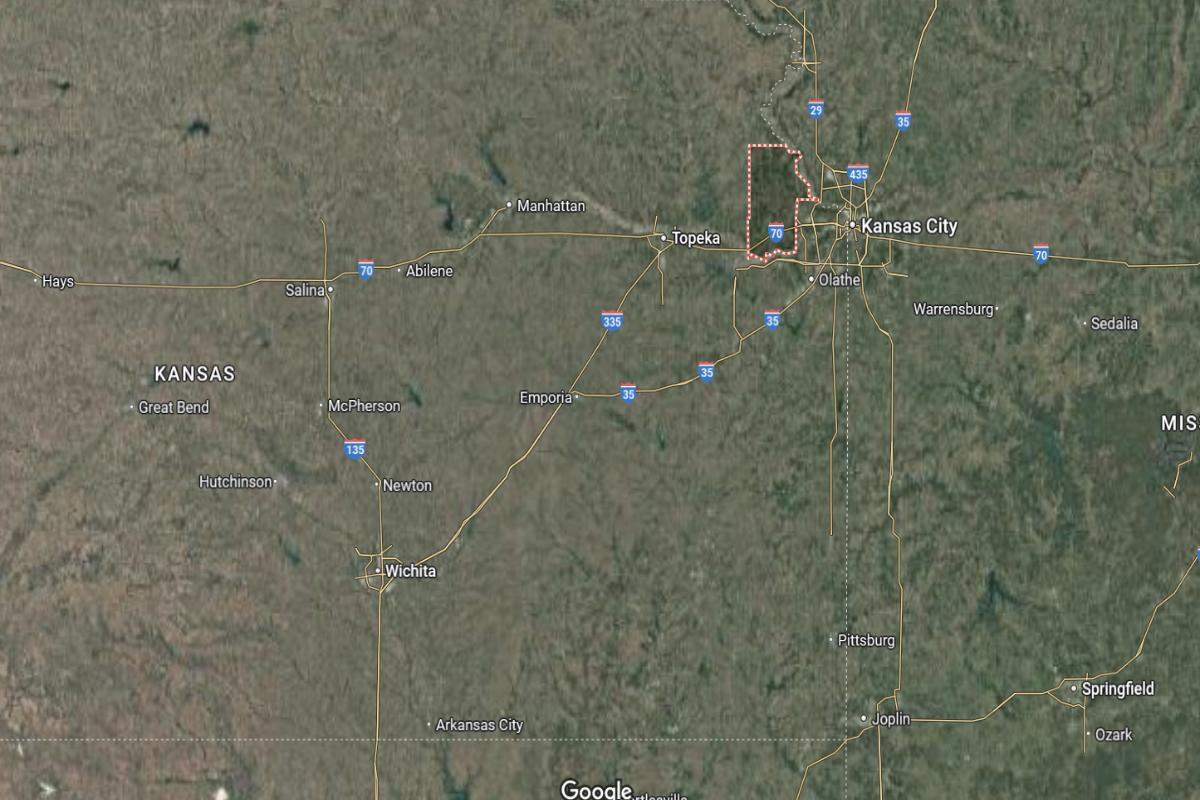
Leavenworth County, Kansas, is located in the northeastern part of the state, approximately 25 miles northwest of Kansas City and about 30 miles northeast of Lawrence. The county seat, Leavenworth, sits near the Missouri River and is around 45 miles east of Topeka. U.S. Highway 73 and K-7 run through the county, offering strong north-south access.
The county is roughly 120 miles south of the Nebraska border and about 200 miles northeast of Wichita. It is also approximately 170 miles east of Salina. Leavenworth County’s location supports both urban access and ties to rural northeastern Kansas.
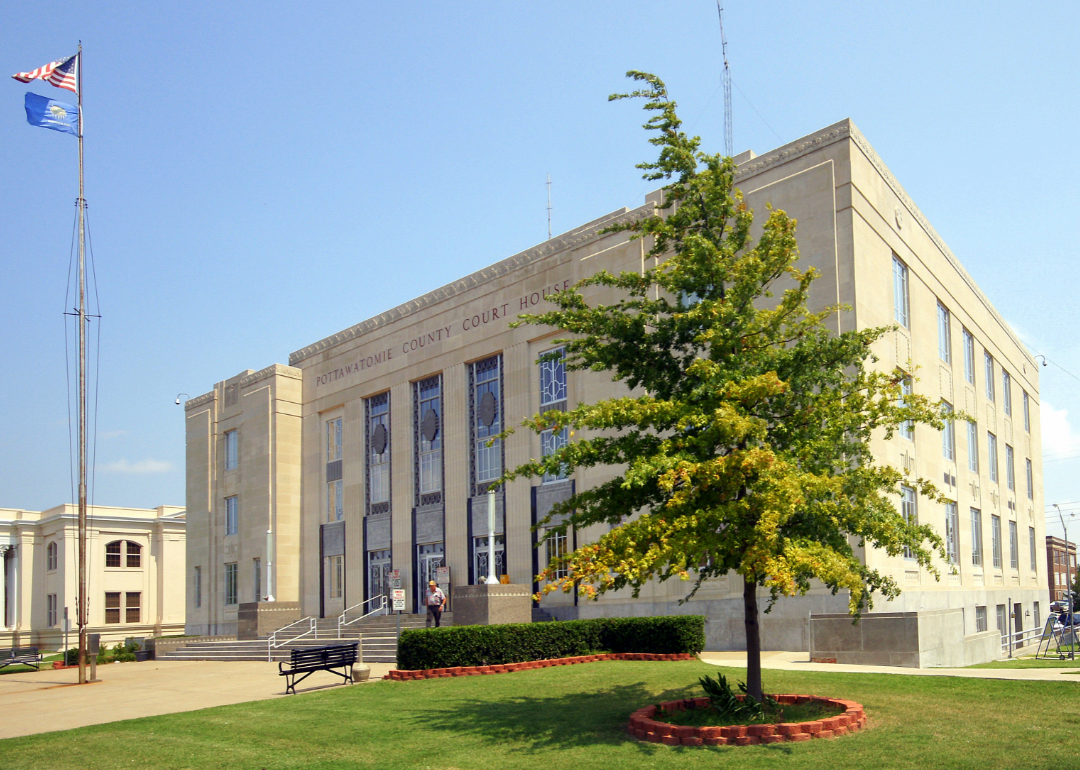
#6. Pottawatomie County, Kansas
– Overall Rank: 187
– Population: 25,482
– Median household income: $85,241
– Median home value: $221,600 (80% own)
– Median rent: $1,009 (20% rent)
– Top public schools: Rock Creek Middle School (grade A), St. George Elementary School (grade A minus), St. Marys Junior/Senior High School (grade A minus)
– Top private schools: Flint Hills Christian School (grade B minus), Hope Lutheran Early Learning Center (grade unavailable)
– Top places: Wamego (grade A minus), St. Marys (grade A minus), Blue Township (grade A)
About
Pottawatomie County, Kansas features a growing economy supported by agriculture, construction, and residential development. The community blends rural heritage with expanding suburban areas, offering a balance between tradition and modern growth. Residents enjoy strong school systems, local businesses, and active community organizations.
The county’s natural beauty includes rolling hills, rivers, and parks that provide opportunities for outdoor activities and family recreation. Historical landmarks and annual events reflect the area’s cultural roots and community pride. With a mix of progress, scenic charm, and small-town values, Pottawatomie County offers a welcoming and evolving lifestyle.
Where is Pottawatomie County?
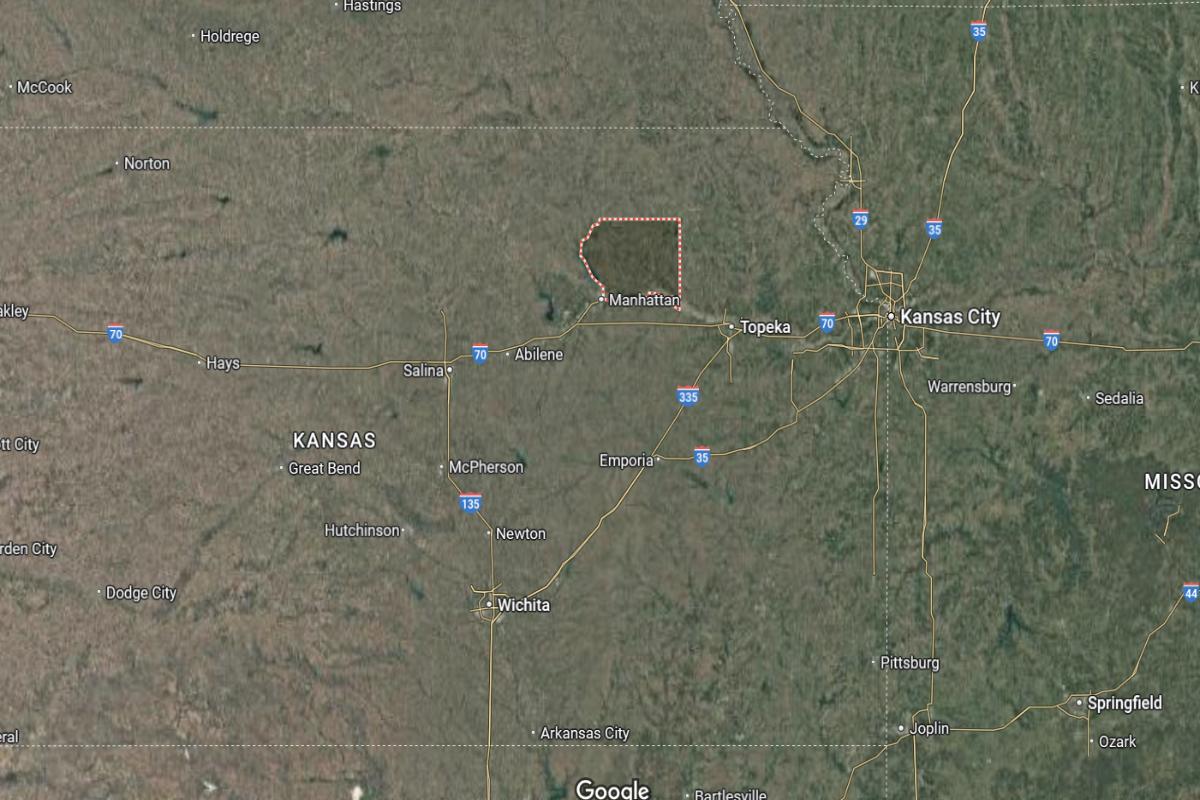
Pottawatomie County, Kansas, is located in the northeastern part of the state, approximately 50 miles northwest of Topeka and about 10 miles east of Manhattan. The county seat, Westmoreland, lies along K-99 and is roughly 60 miles northeast of Salina. Its location places it near the edge of the Flint Hills and close to Kansas State University.
The county is about 140 miles north of Wichita and around 110 miles west of Kansas City. It is also approximately 100 miles south of the Nebraska border. Pottawatomie County combines rural landscapes with growing suburban development due to its proximity to Manhattan.
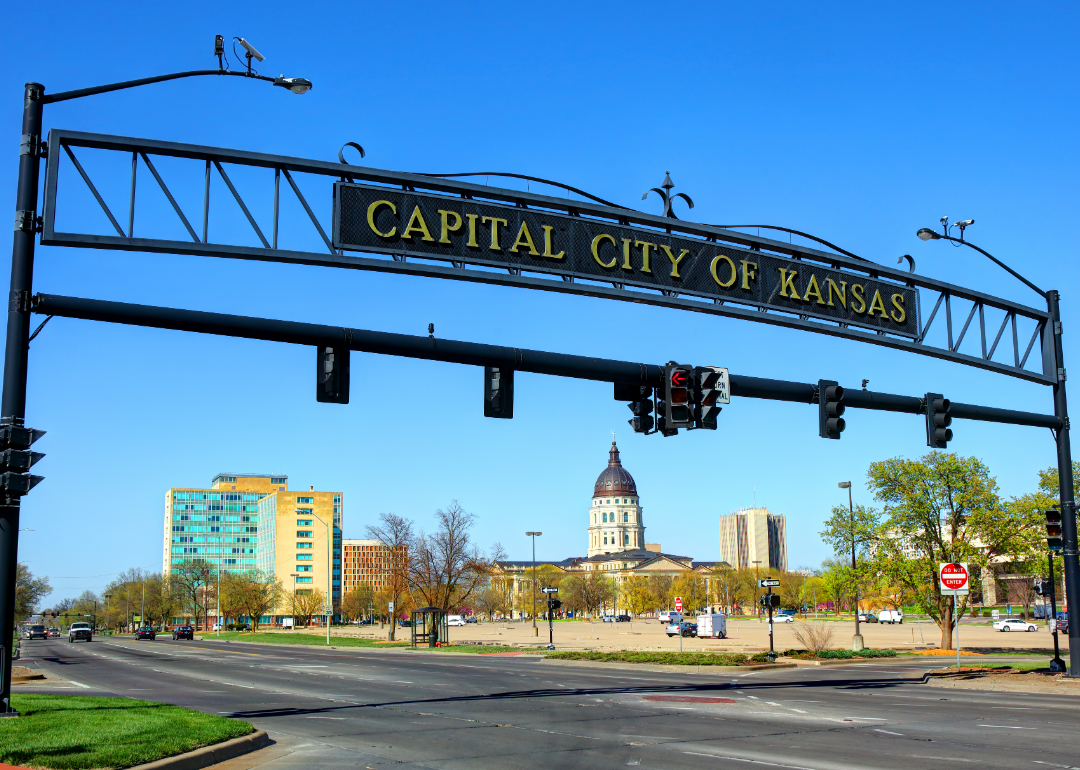
#5. Shawnee County, Kansas
– Overall Rank: 173
– Population: 178,625
– Median household income: $63,463
– Median home value: $159,900 (67% own)
– Median rent: $942 (33% rent)
– Top public schools: Silver Lake Elementary School (grade A), Jay Shideler Elementary School (grade A minus), Farley Elementary School (grade A minus)
– Top private schools: Hayden Catholic High School (grade A minus), Cair Paravel Latin School (grade A minus), Heritage Christian School (grade B)
– Top places: Topeka (grade B+), Mission Township (grade A), Auburn Township (grade A minus)
About
Shawnee County, Kansas serves as a major hub for government, healthcare, education, and cultural activity, offering a diverse and stable economy. The community is supported by strong public institutions, local businesses, and an active arts and civic scene. Residents benefit from quality services, vibrant neighborhoods, and a variety of community programs.
The county features scenic parks, trails, and public spaces that encourage outdoor recreation and family gatherings. Museums, historic landmarks, and annual festivals showcase a rich blend of history, culture, and public pride. With its mix of tradition, opportunity, and community spirit, Shawnee County offers a dynamic and welcoming environment.
Where is Shawnee County?
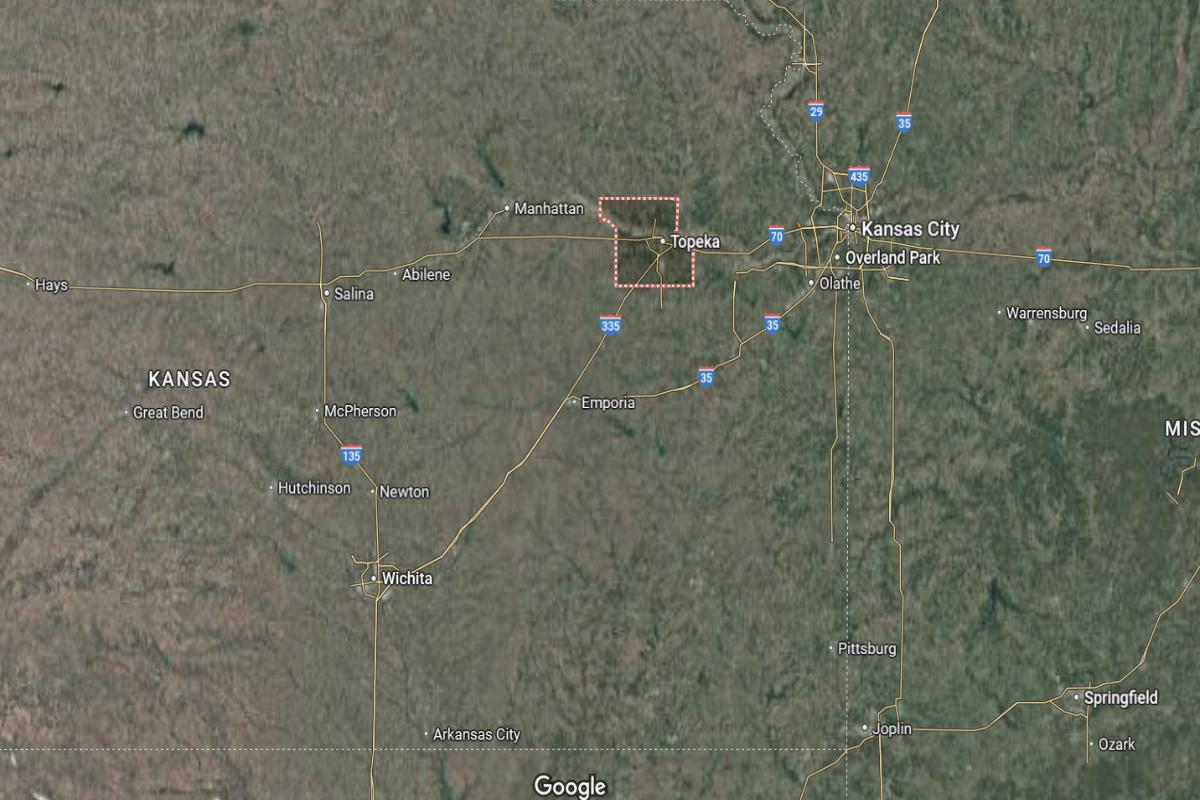
Shawnee County, Kansas, is located in the northeastern part of the state, approximately 60 miles west of Kansas City and about 90 miles northeast of Wichita. The county seat, Topeka, is also the state capital and lies near the intersection of I-70 and U.S. Highway 75. It is around 50 miles east of Junction City and 70 miles southeast of Manhattan.
The county is roughly 120 miles south of the Nebraska border and about 180 miles east of the Colorado border. Shawnee County is also approximately 140 miles north of the Oklahoma border. Its location makes it a key administrative, political, and transportation hub in eastern Kansas.
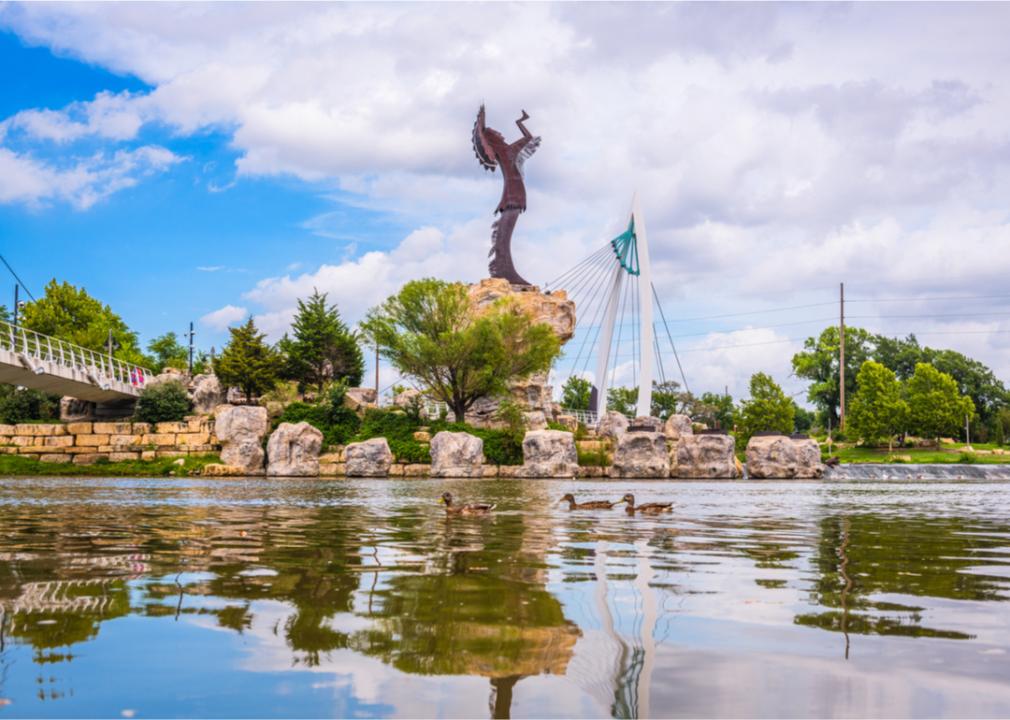
#4. Sedgwick County, Kansas
– Overall Rank: 151
– Population: 522,700
– Median household income: $65,372
– Median home value: $175,700 (63% own)
– Median rent: $937 (37% rent)
– Top public schools: Wheatland Elementary School (grade A), Abilene Elementary School (grade A), Cheney Elementary School (grade A)
– Top private schools: Wichita Collegiate School (grade A+), The Independent School (grade A+), Trinity Academy (grade A minus)
– Top places: College Hill (grade A+), Courtland (grade A+), Forest Hills (grade A)
About
Sedgwick County, Kansas is a key economic and cultural center, driven by aerospace, healthcare, education, and advanced manufacturing industries. The county supports a diverse population with strong public services, educational institutions, and thriving local businesses. Community life is vibrant, with a focus on innovation, the arts, and civic involvement.
Residents enjoy access to parks, museums, entertainment venues, and recreational facilities that enhance quality of life. Historic neighborhoods, festivals, and cultural centers reflect a blend of tradition and modern energy. With its strong economic base and rich community fabric, Sedgwick County offers both opportunity and a dynamic living environment.
Where is Sedgwick County?
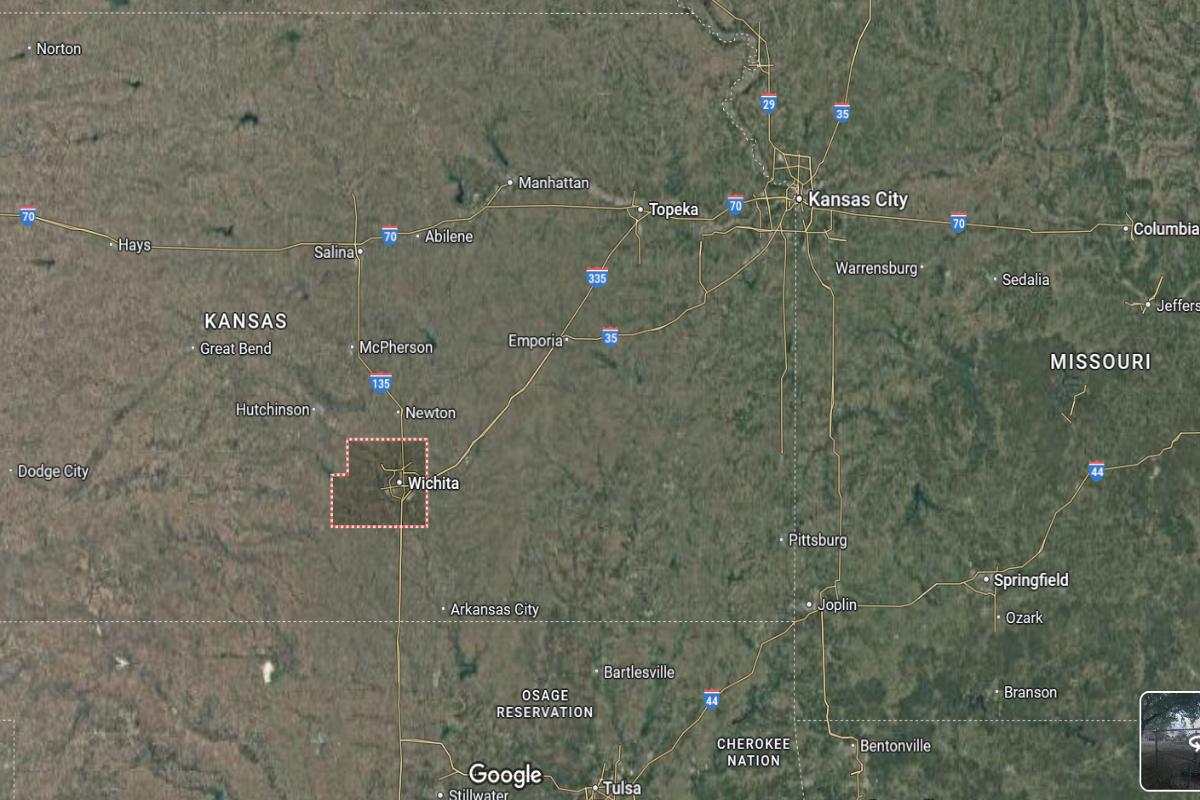
Sedgwick County, Kansas, is located in the south-central part of the state, with Wichita as its county seat and largest city. It is approximately 160 miles southwest of Topeka and about 130 miles north of the Oklahoma border. The county lies around 60 miles southeast of Hutchinson and 100 miles south of Salina.
Sedgwick County is about 200 miles west of Kansas City and roughly 240 miles east of the Colorado border. It is also located approximately 90 miles north of the Oklahoma City metro area. Its position at the crossroads of major highways supports its role as a major commercial and transportation center in Kansas.
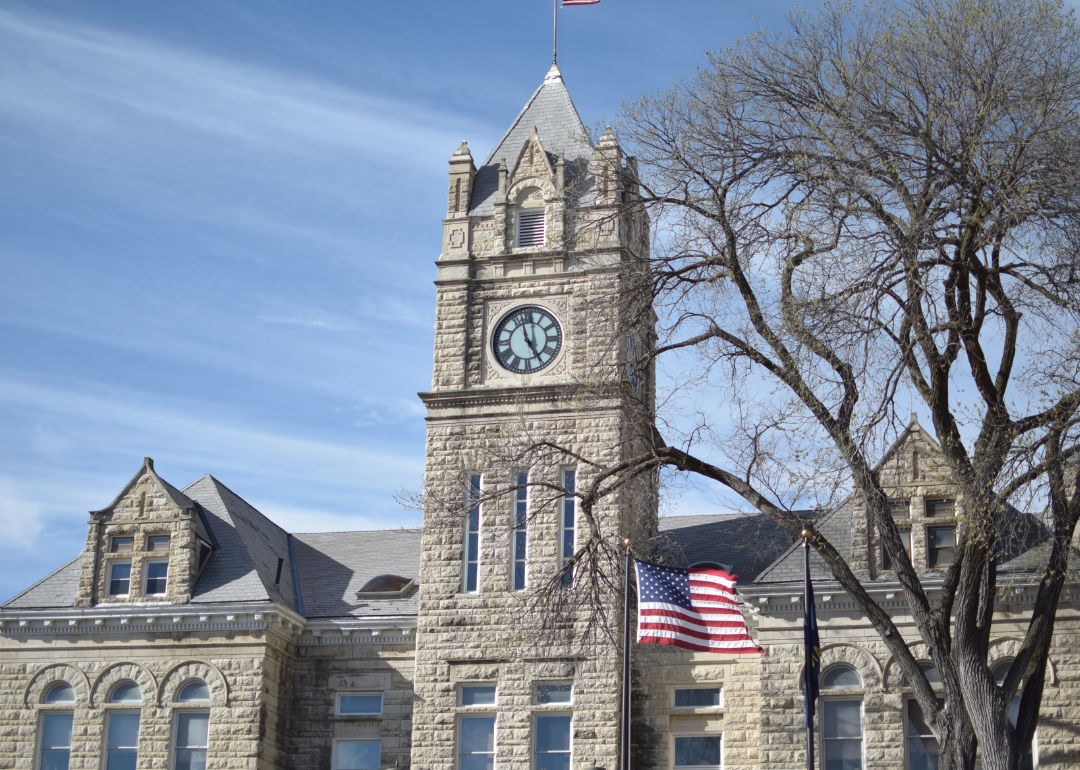
#3. Riley County, Kansas
– Overall Rank: 91
– Population: 72,105
– Median household income: $56,327
– Median home value: $231,000 (44% own)
– Median rent: $1,016 (56% rent)
– Top public schools: Manhattan High School (grade A), Amanda Arnold Elementary School (grade A), Susan B. Anthony Middle School (grade A)
– Top private schools: Manhattan Catholic School (grade unavailable), Kansas State University Center for Child Development (grade unavailable), Creche – Grand Mere Village (grade unavailable)
– Top places: Manhattan (grade A+), Grant Township (grade A+), Ogden Township (grade A)
About
Riley County, Kansas is known for its strong educational and military presence, contributing to a vibrant and diverse economy. The area is supported by sectors such as research, public services, and retail, alongside a dynamic student population. Communities are active, with a focus on education, innovation, and cultural engagement.
Scenic landscapes, parks, and recreational areas offer residents and visitors opportunities for hiking, boating, and outdoor relaxation. Historic sites, museums, and public events celebrate both the area’s past and its forward-looking spirit. With its blend of tradition, academic influence, and natural beauty, Riley County offers a progressive and welcoming atmosphere.
Where is Riley County?
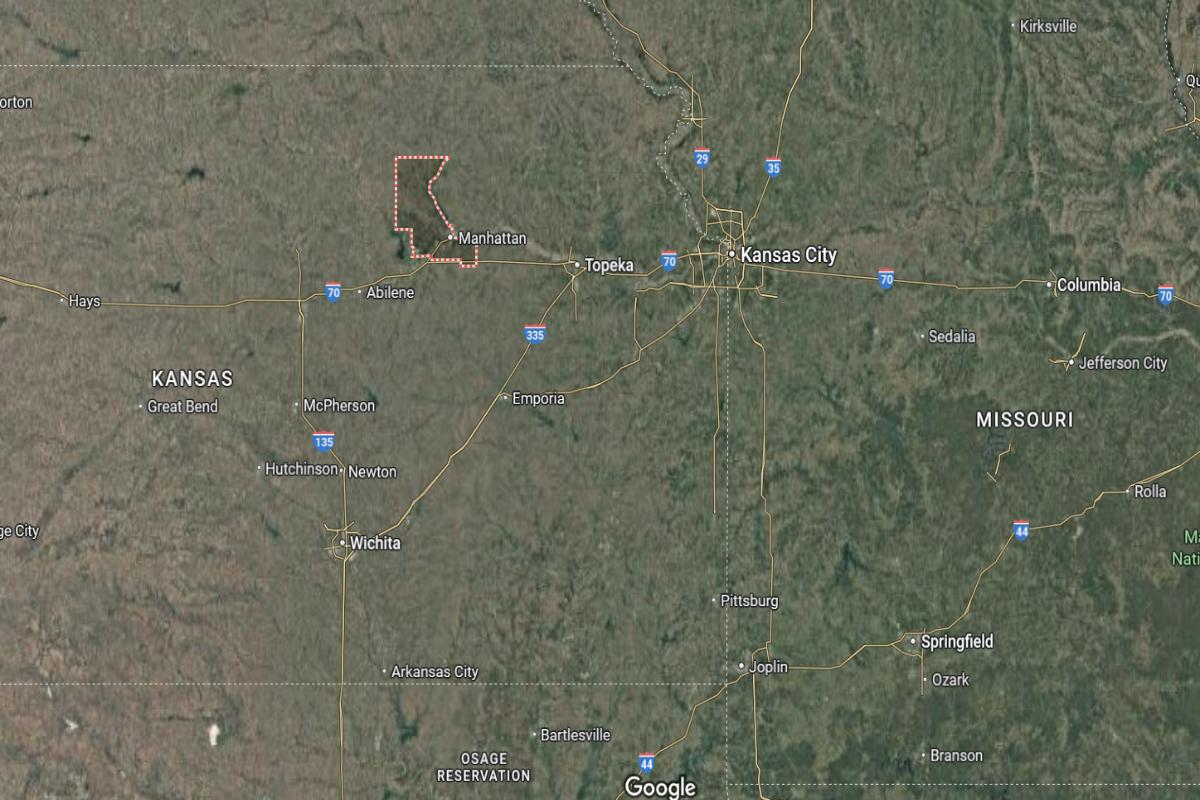
Riley County, Kansas, is located in the northeastern part of the state, approximately 55 miles west of Topeka and about 60 miles north of Emporia. The county seat, Manhattan, is home to Kansas State University and lies along the Kansas River. It is about 50 miles east of Salina and 120 miles northwest of Kansas City.
The county is roughly 140 miles north of Wichita and about 110 miles south of the Nebraska border. Riley County is also approximately 190 miles east of the Colorado border. Its location places it at the edge of the Flint Hills, serving as an educational and cultural center in the region.
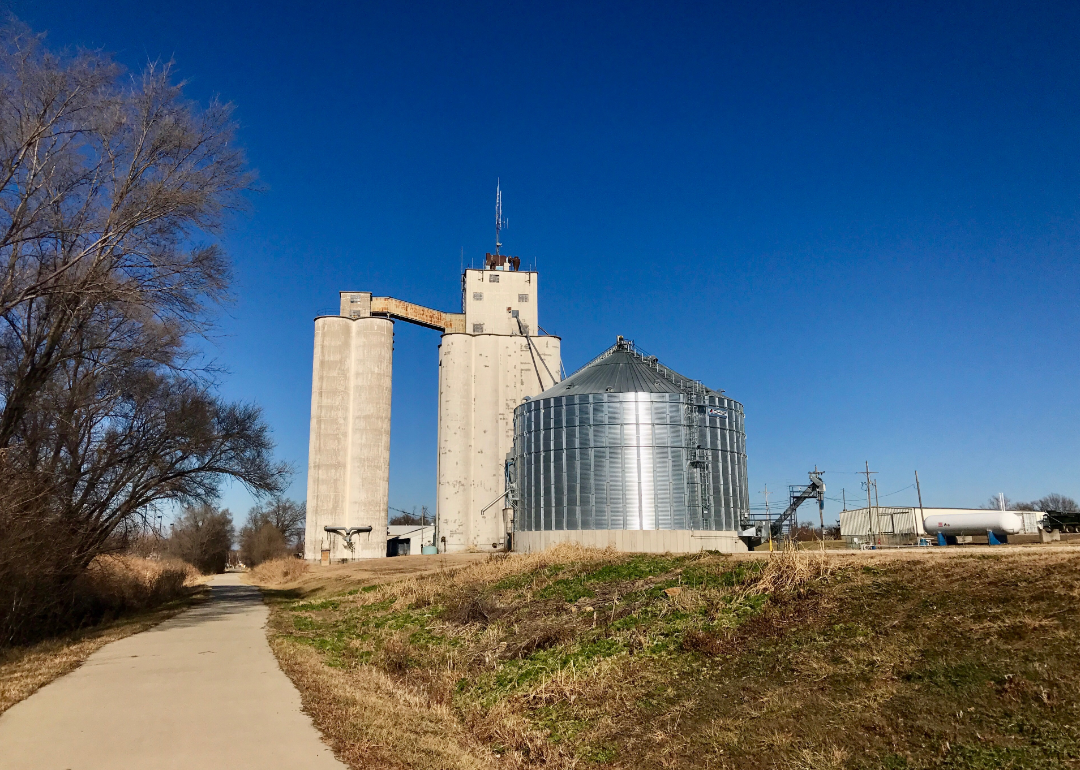
#2. Douglas County, Kansas
– Overall Rank: 44
– Population: 119,094
– Median household income: $66,153
– Median home value: $259,500 (50% own)
– Median rent: $1,041 (50% rent)
– Top public schools: Langston Hughes Elementary School (grade A), Quail Run Elementary School (grade A minus), Lawrence Free State High School (grade A minus)
– Top private schools: Bishop Seabury Academy (grade A+), Veritas Christian School (grade B+), Corpus Christi Catholic School (grade unavailable)
– Top places: Lawrence (grade A+), Baldwin City (grade A), Eudora (grade A minus)
About
Douglas County, Kansas is a hub of education, culture, and civic engagement, supported by a diverse economy that includes academia, technology, and small business. Its vibrant communities are shaped by a rich arts scene, historic preservation, and progressive values. Residents actively participate in public life, with a strong emphasis on education, sustainability, and social inclusion.
The county features scenic trails, parks, and natural reserves that promote outdoor recreation and environmental awareness. Historic districts, cultural festivals, and public art reflect a blend of heritage and modern creativity. With its mix of intellectual energy, community spirit, and natural beauty, Douglas County offers a dynamic and inclusive quality of life.
Where is Douglas County?
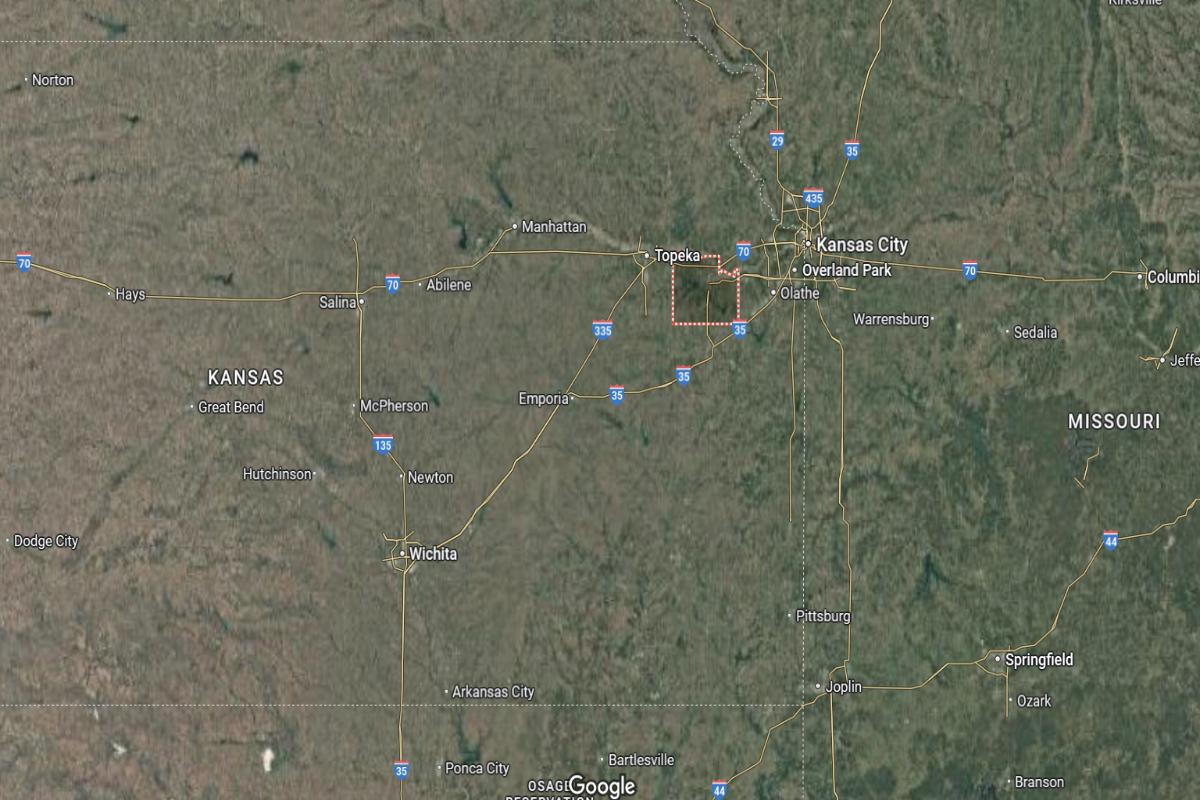
Douglas County, Kansas, is located in the northeastern part of the state, approximately 25 miles east of Topeka and about 40 miles west of Kansas City. The county seat, Lawrence, lies along I-70 and U.S. Highway 59, making it a key point between major urban areas. It is also around 80 miles northeast of Emporia.
The county is roughly 150 miles north of the Oklahoma border and about 180 miles east of the Colorado border. Douglas County is approximately 130 miles south of the Nebraska border. Its location and university presence support a blend of cultural, academic, and economic activity in eastern Kansas.
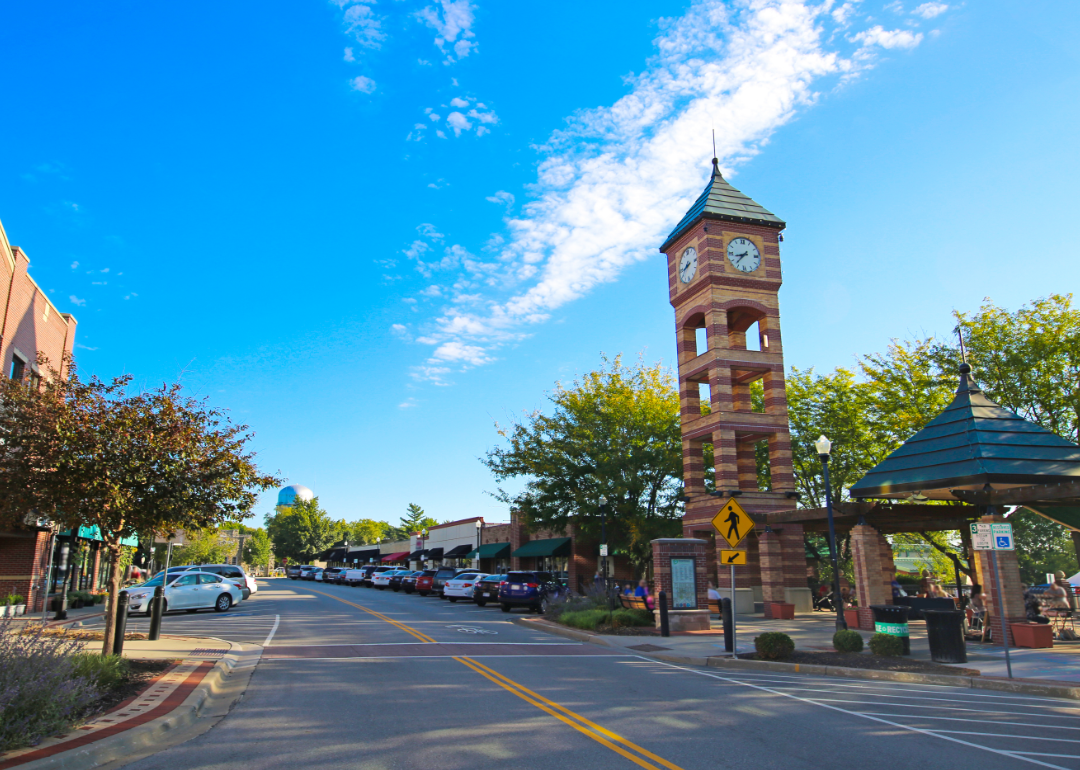
#1. Johnson County, Kansas
– Overall Rank: 14
– Population: 610,742
– Median household income: $103,644
– Median home value: $343,300 (69% own)
– Median rent: $1,312 (31% rent)
– Top public schools: Blue Valley North High School (grade A+), Blue Valley High School (grade A+), Blue Valley West High School (grade A+)
– Top private schools: Hyman Brand Hebrew Academy (grade A), Saint Thomas Aquinas High School (grade A), Maranatha Academy (grade A)
– Top places: Beverly Estates (grade A+), Nall Hills (grade A+), Leawood (grade A+)
About
Johnson County, Kansas is a major center of economic growth, suburban development, and high-quality public services. Its economy thrives on sectors such as finance, healthcare, technology, and education, supporting a highly skilled workforce. The county is known for excellent schools, modern infrastructure, and vibrant community engagement.
Parks, greenways, and cultural institutions provide residents with rich recreational and artistic opportunities. Historic sites and family-friendly events contribute to a strong sense of place and community pride. With its blend of prosperity, innovation, and livability, Johnson County remains one of the most sought-after areas in the region.
Where is Johnson County?

Johnson County, Kansas, is located in the northeastern corner of the state, directly adjacent to Kansas City, Missouri. The county seat, Olathe, is approximately 20 miles southwest of downtown Kansas City and about 65 miles east of Topeka. It is also around 90 miles northeast of Emporia, positioned along key highways like I-35 and U.S. 69.
The county is roughly 160 miles north of the Oklahoma border and about 190 miles southeast of Salina. Johnson County is also approximately 170 miles south of the Nebraska border. Its location places it at the center of the Kansas City metropolitan area, making it a major suburban, commercial, and residential hub.
This story features data reporting and writing by Elena Cox and is part of a series utilizing data automation across 50 states.
By Stacker

